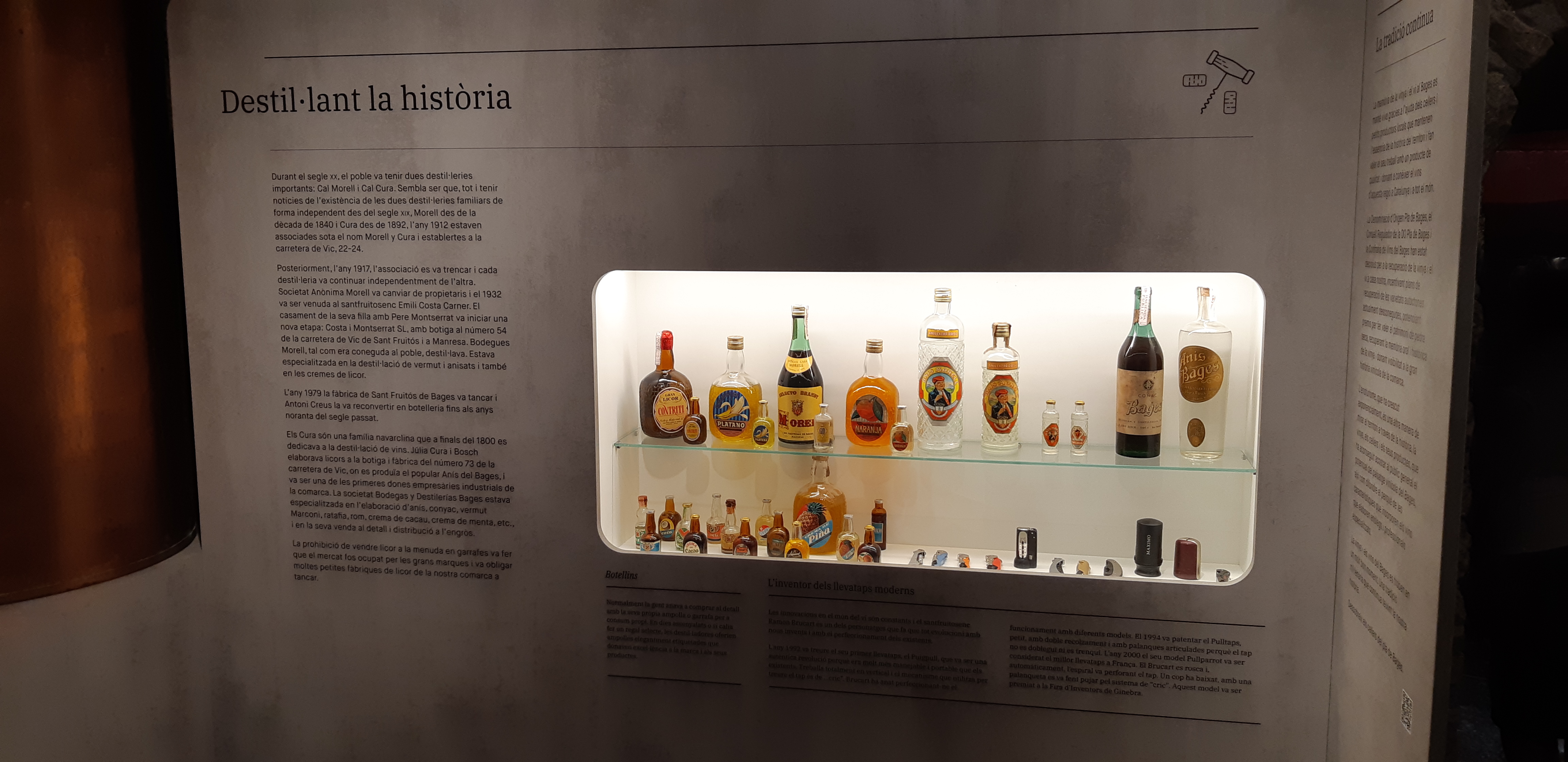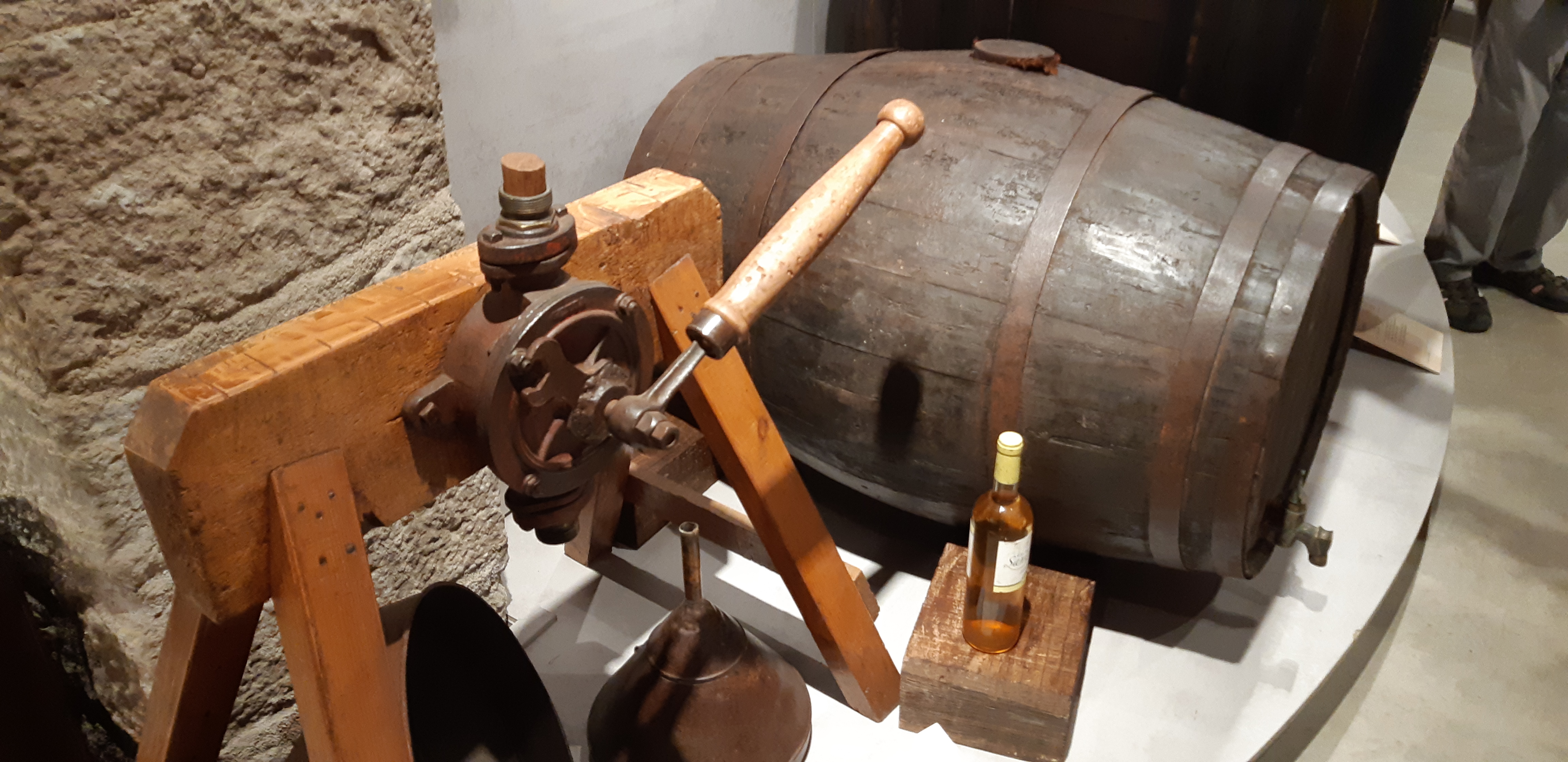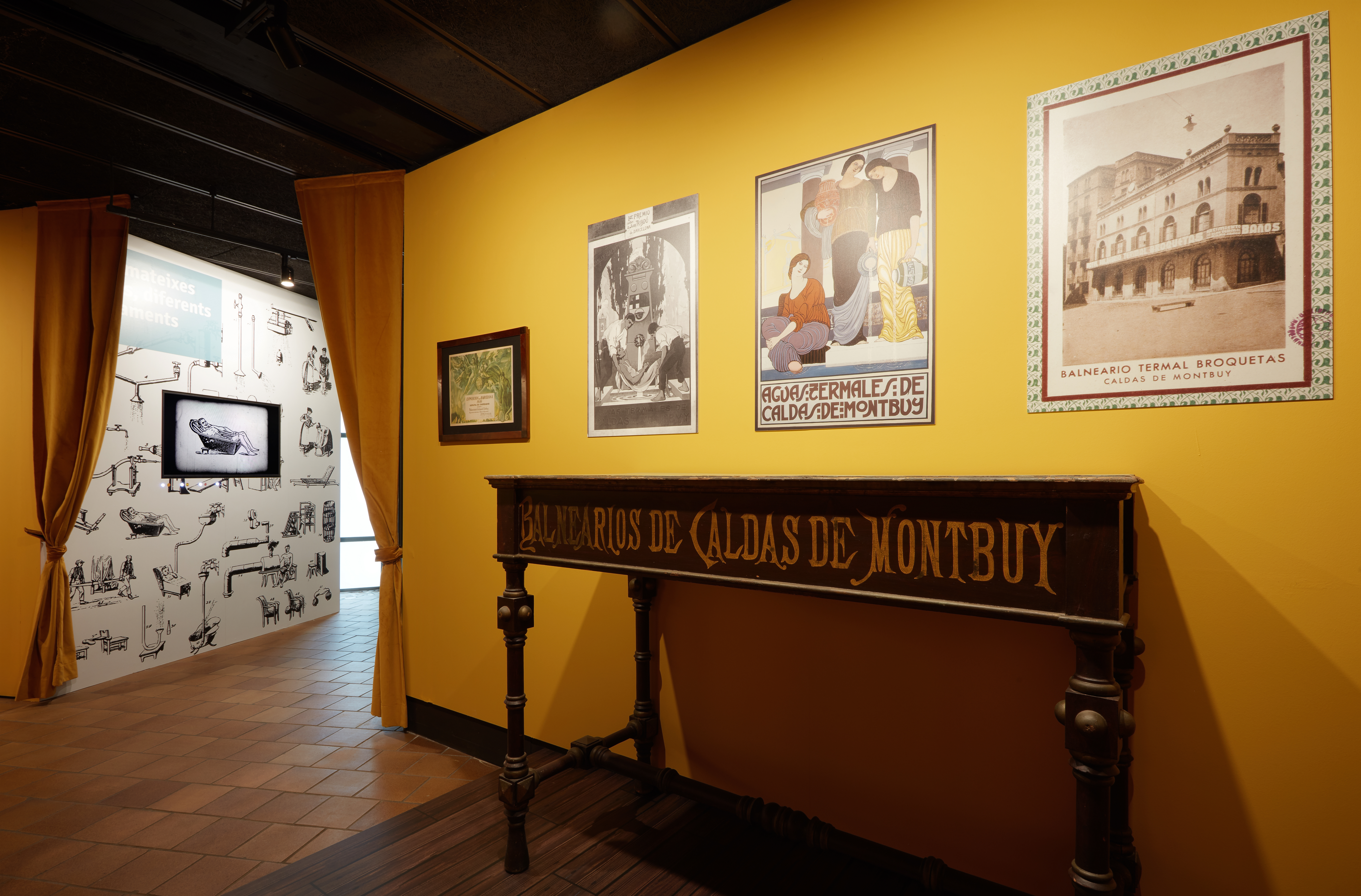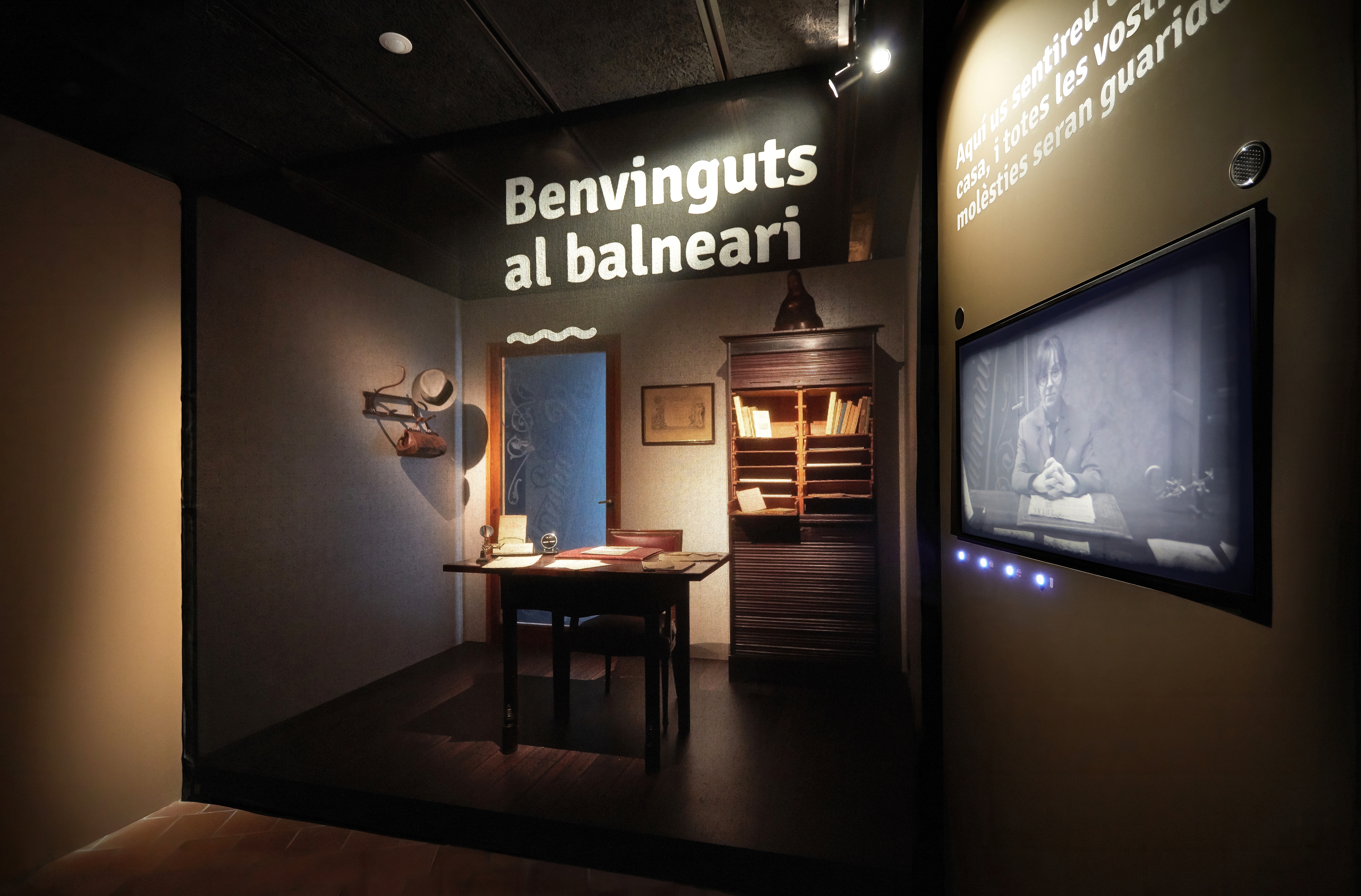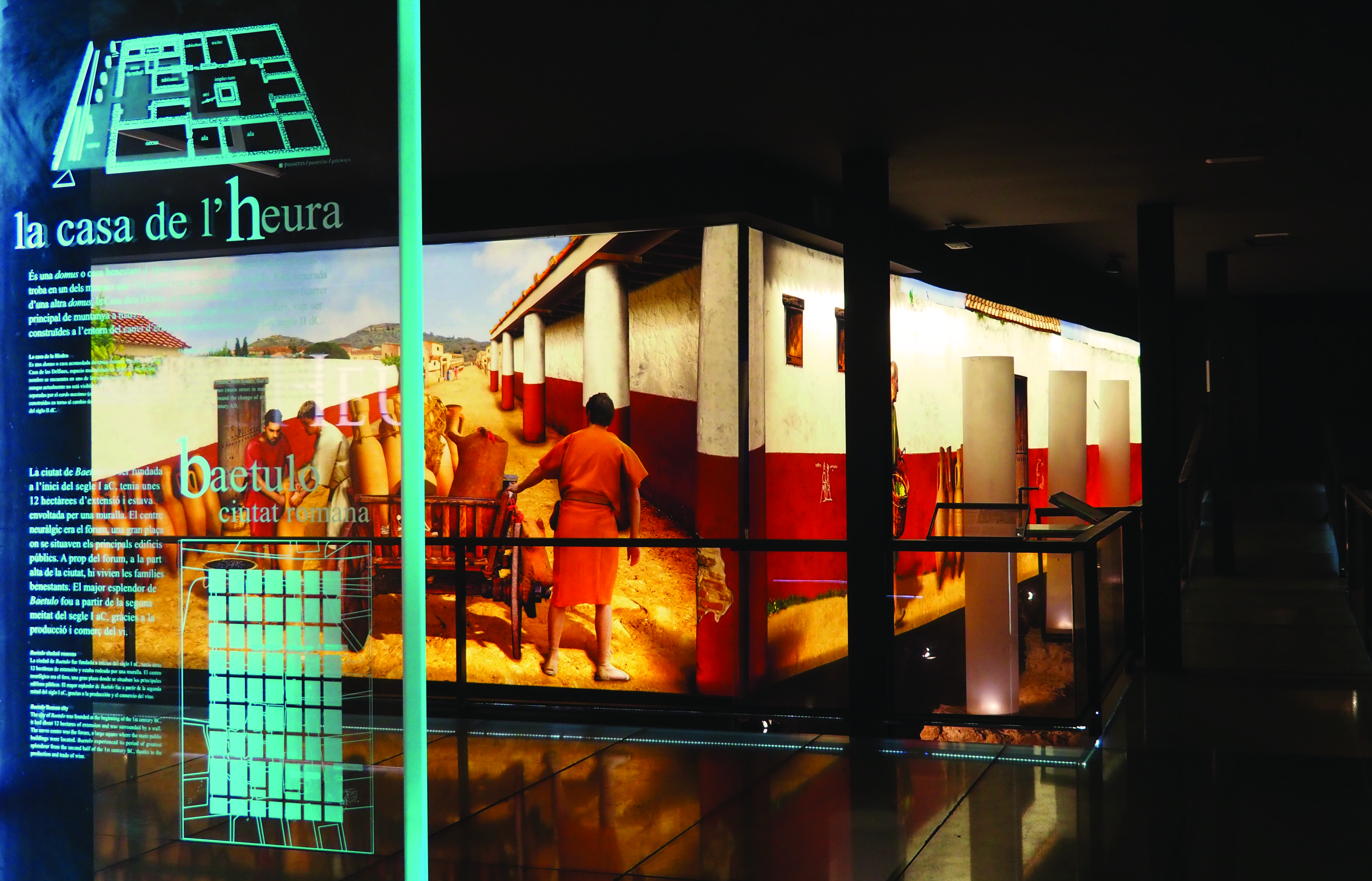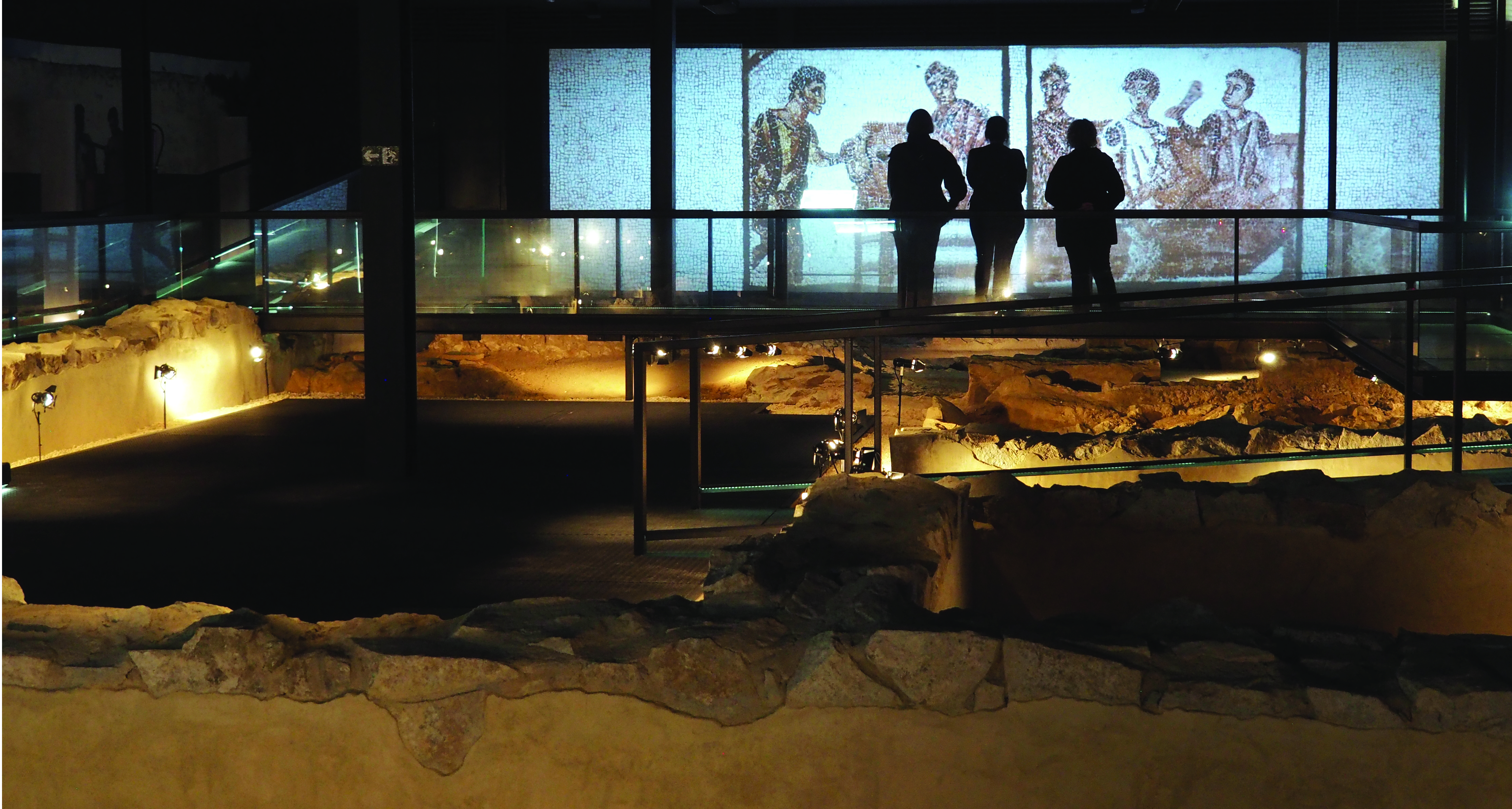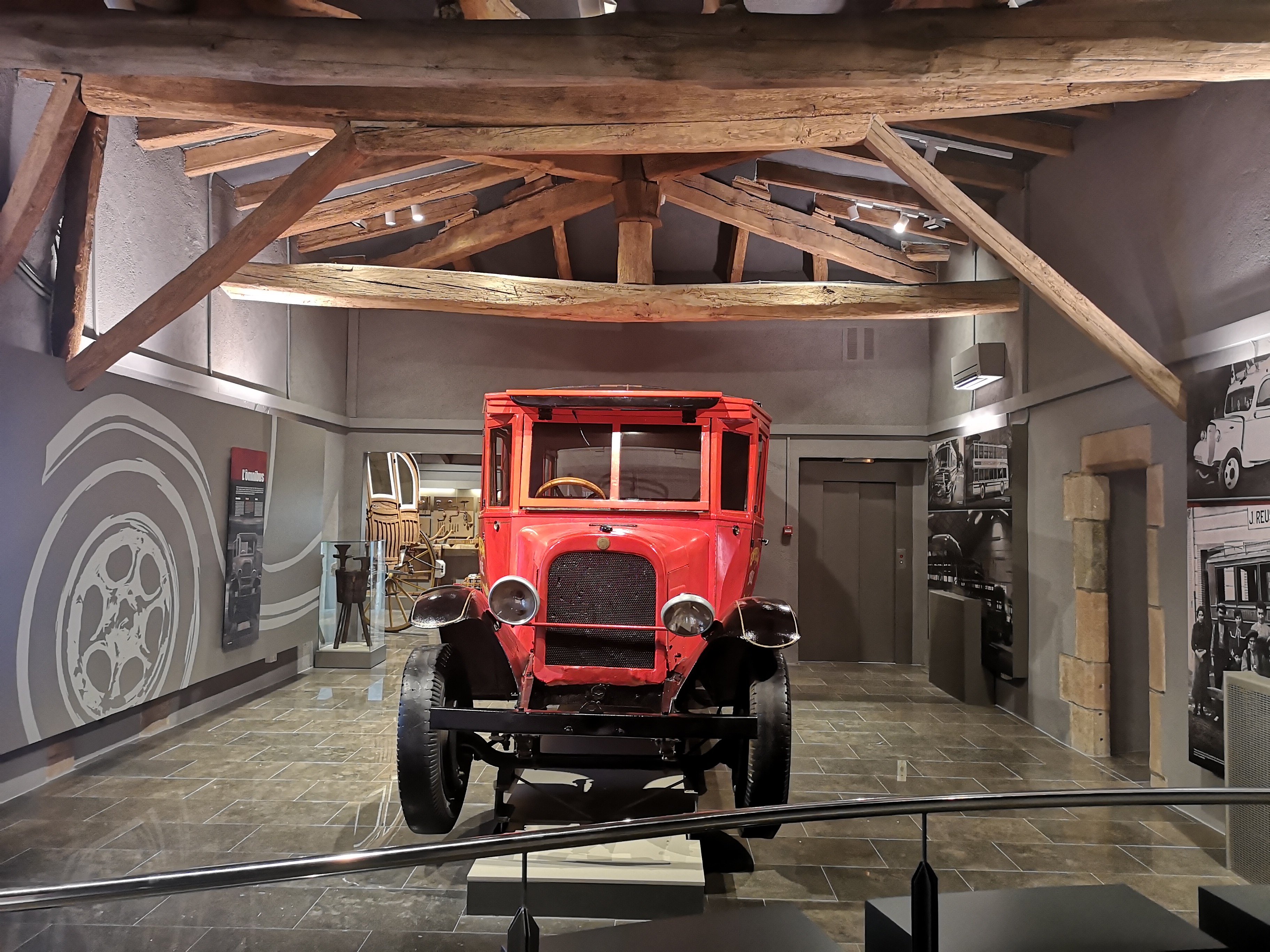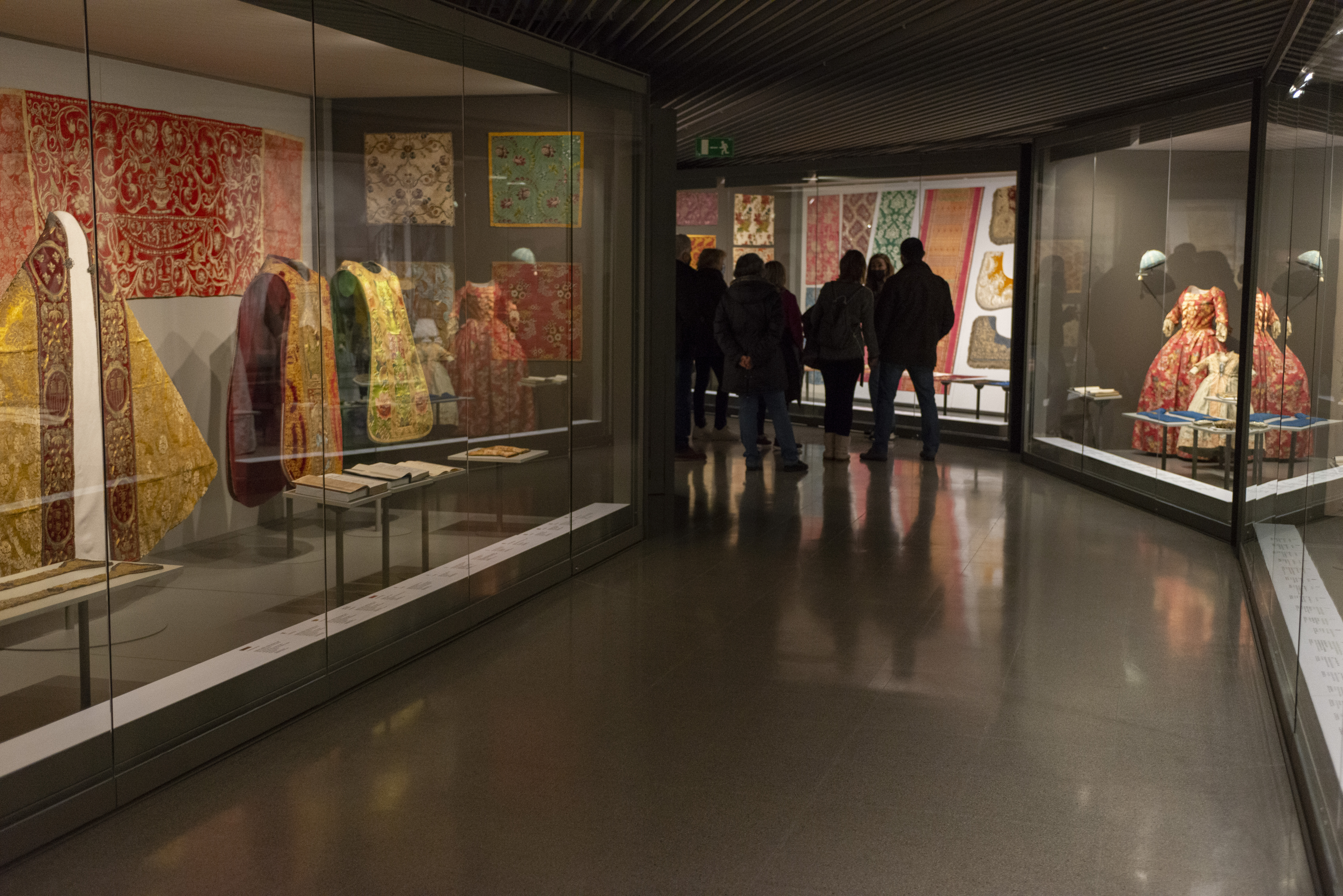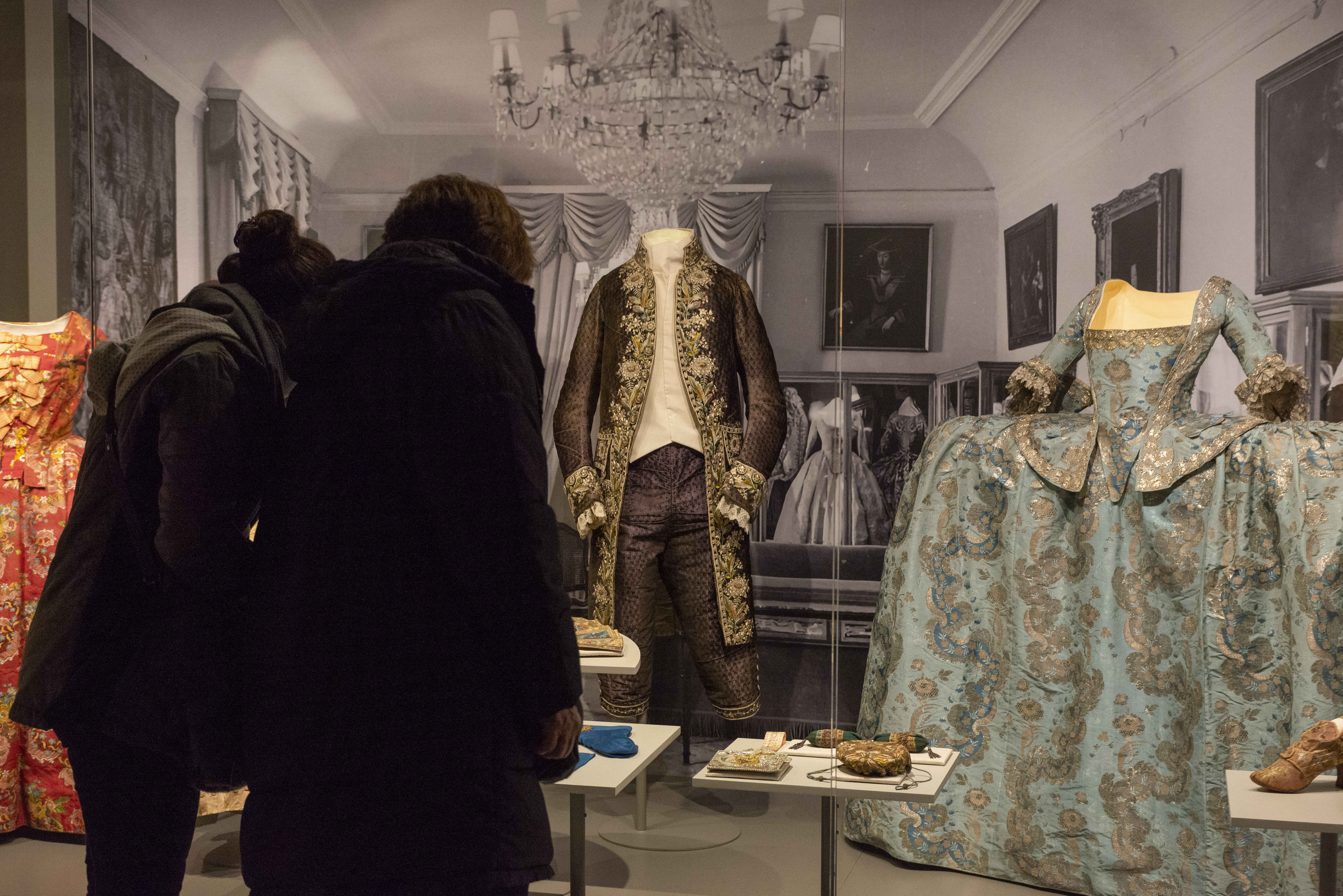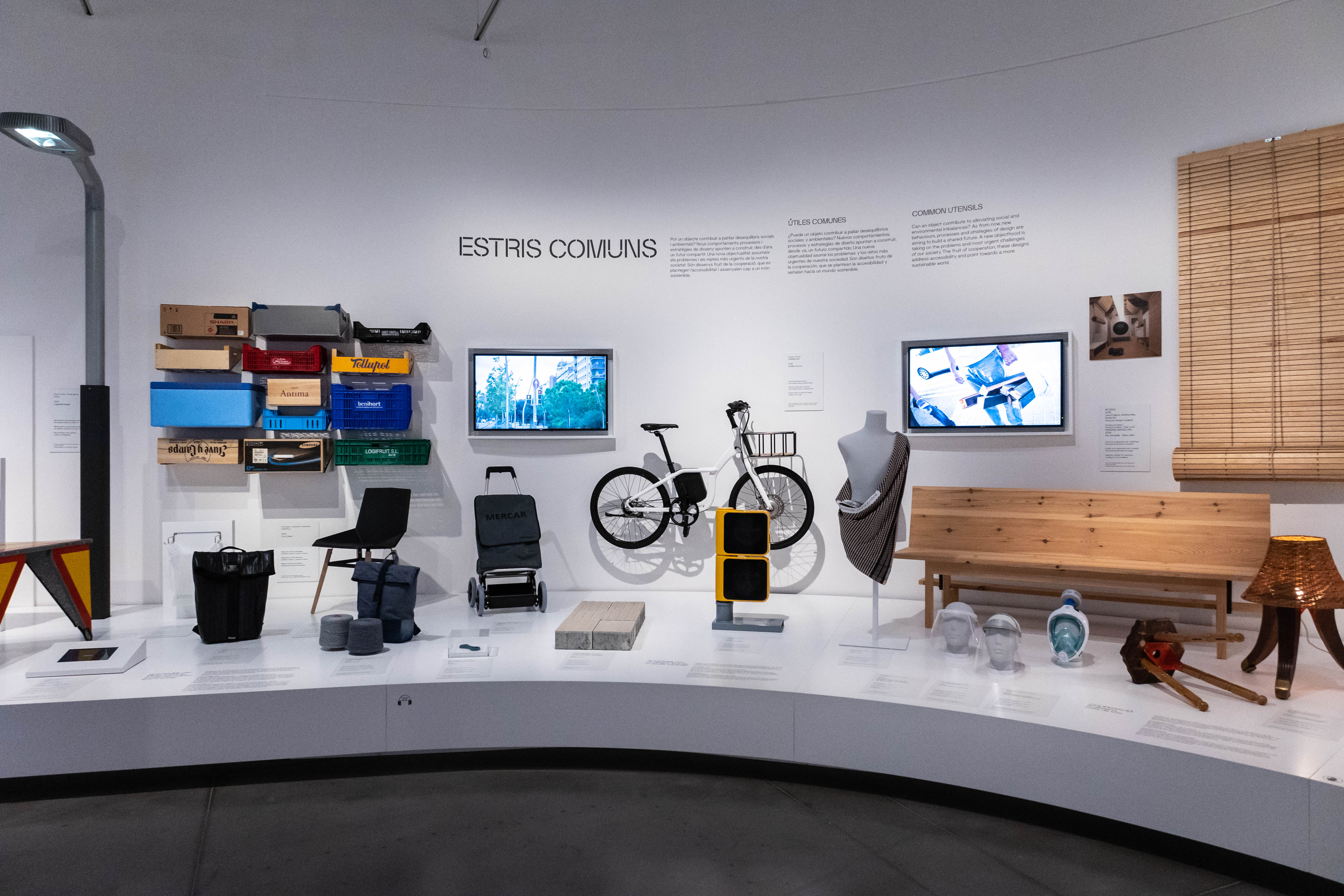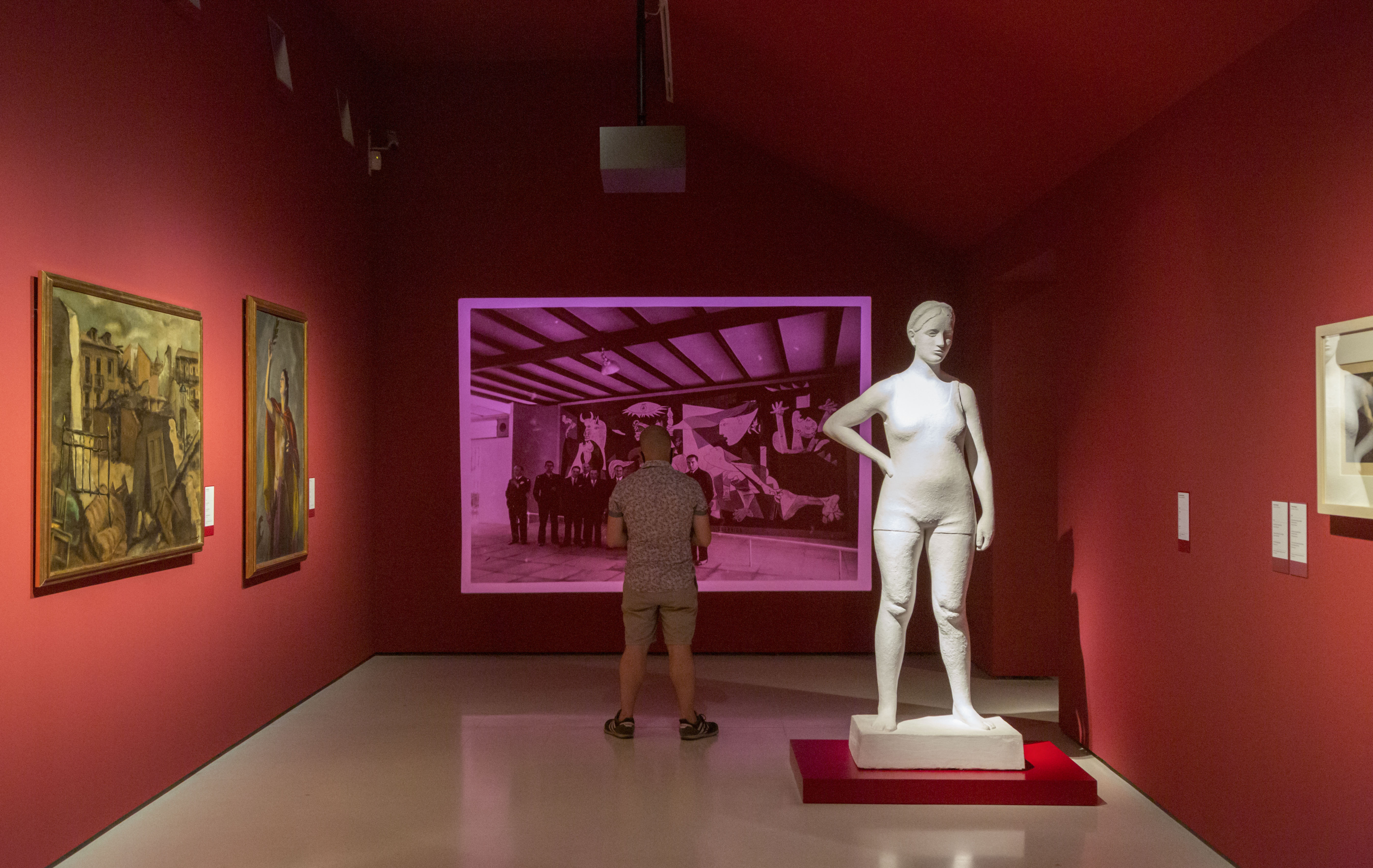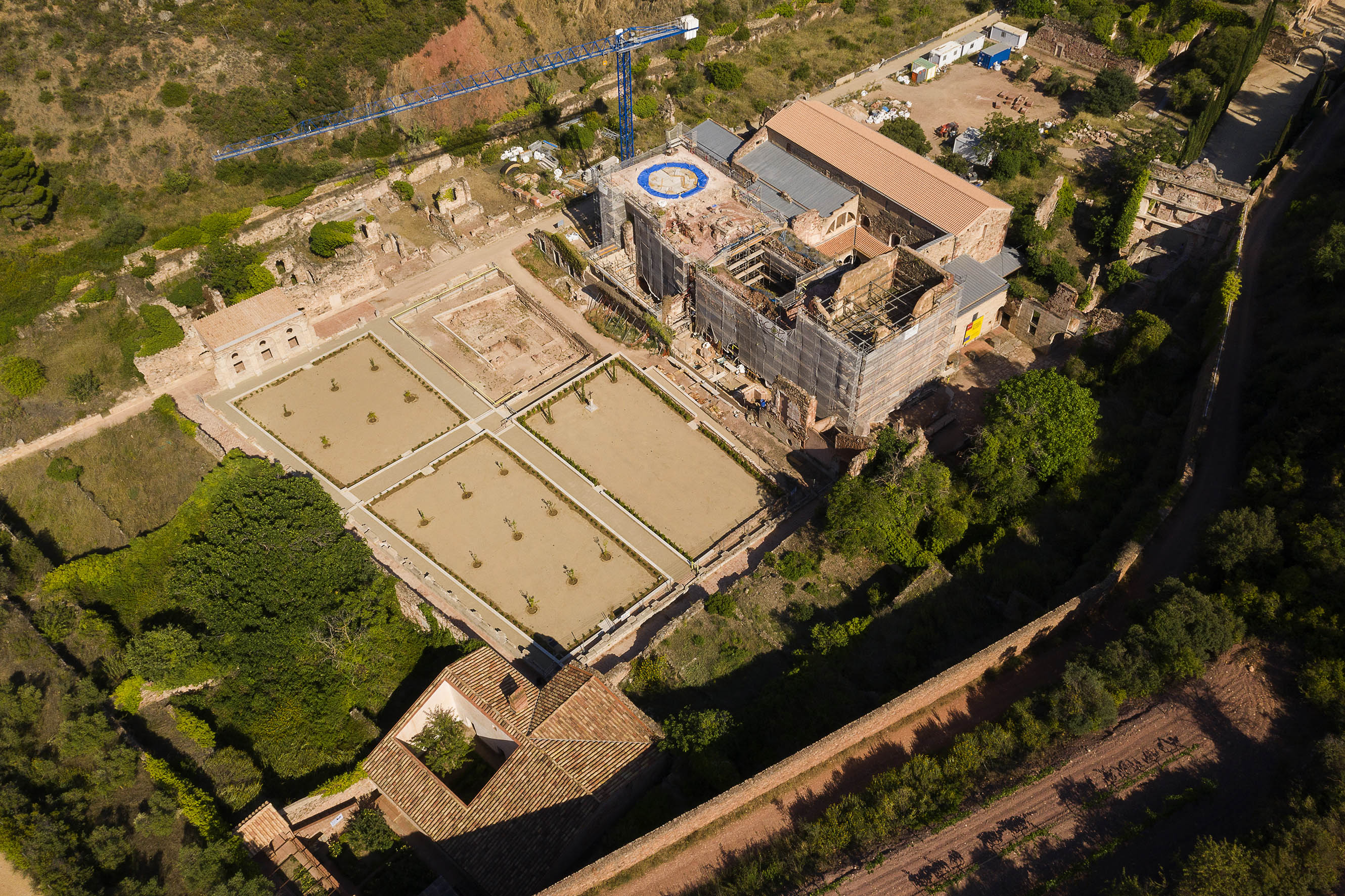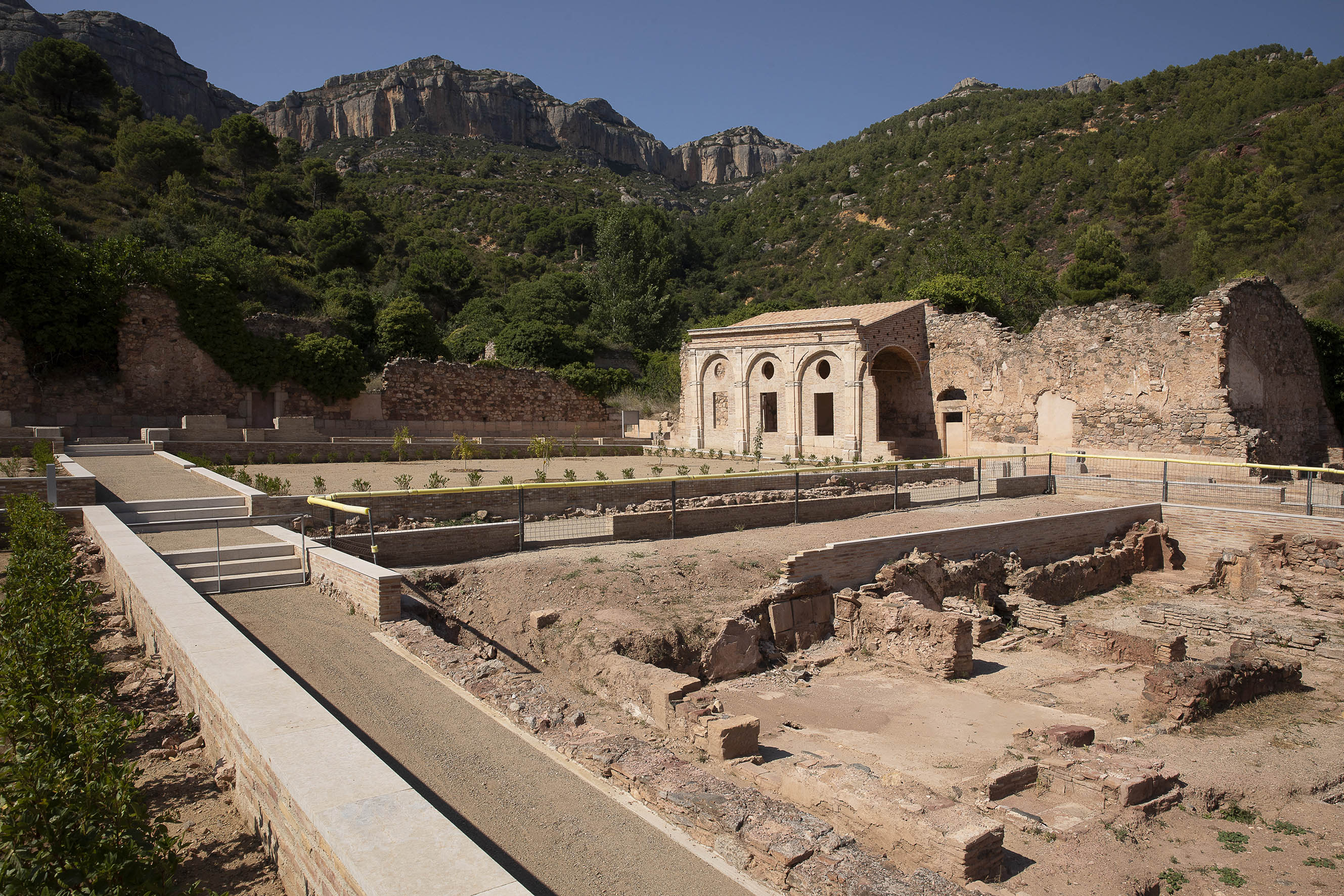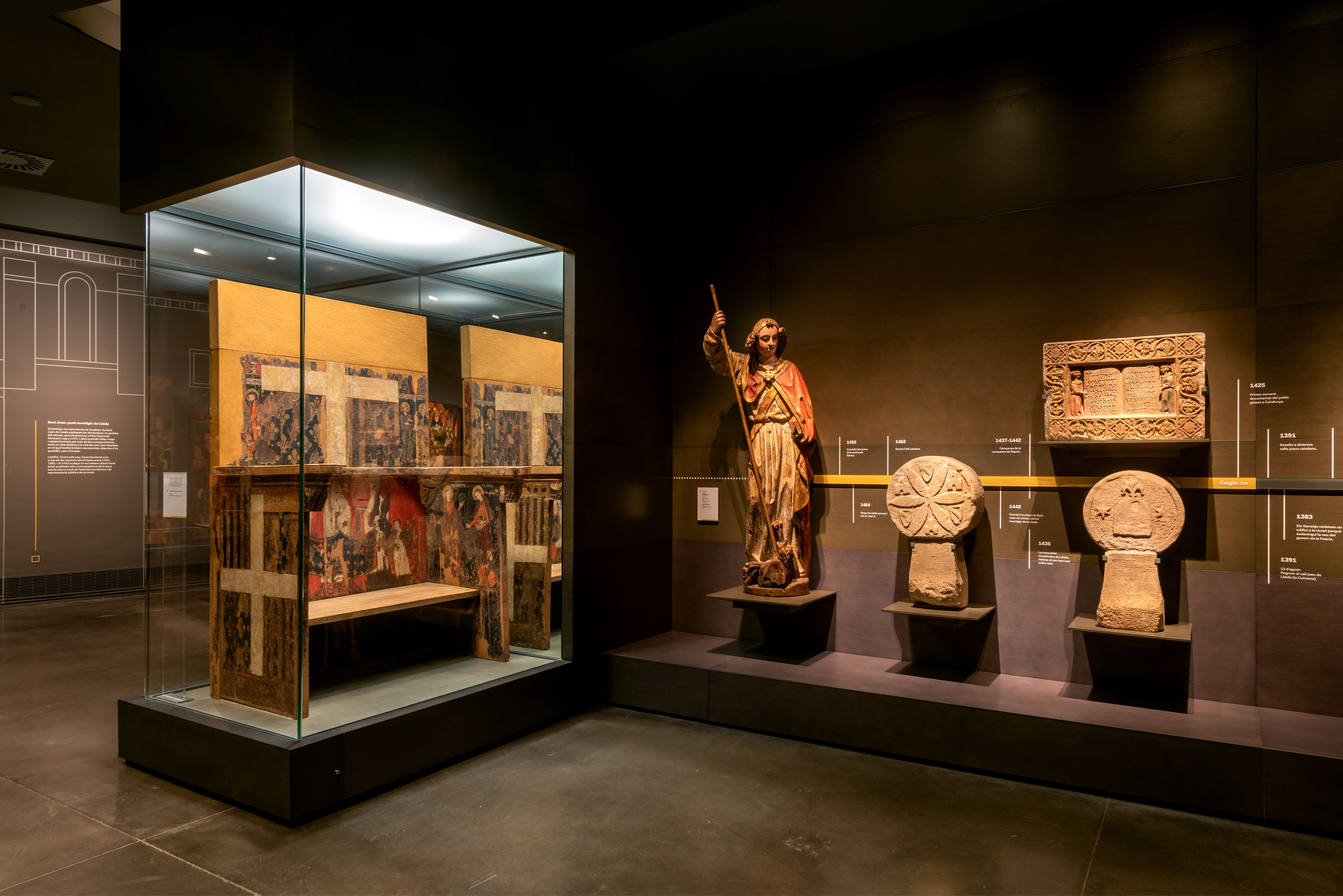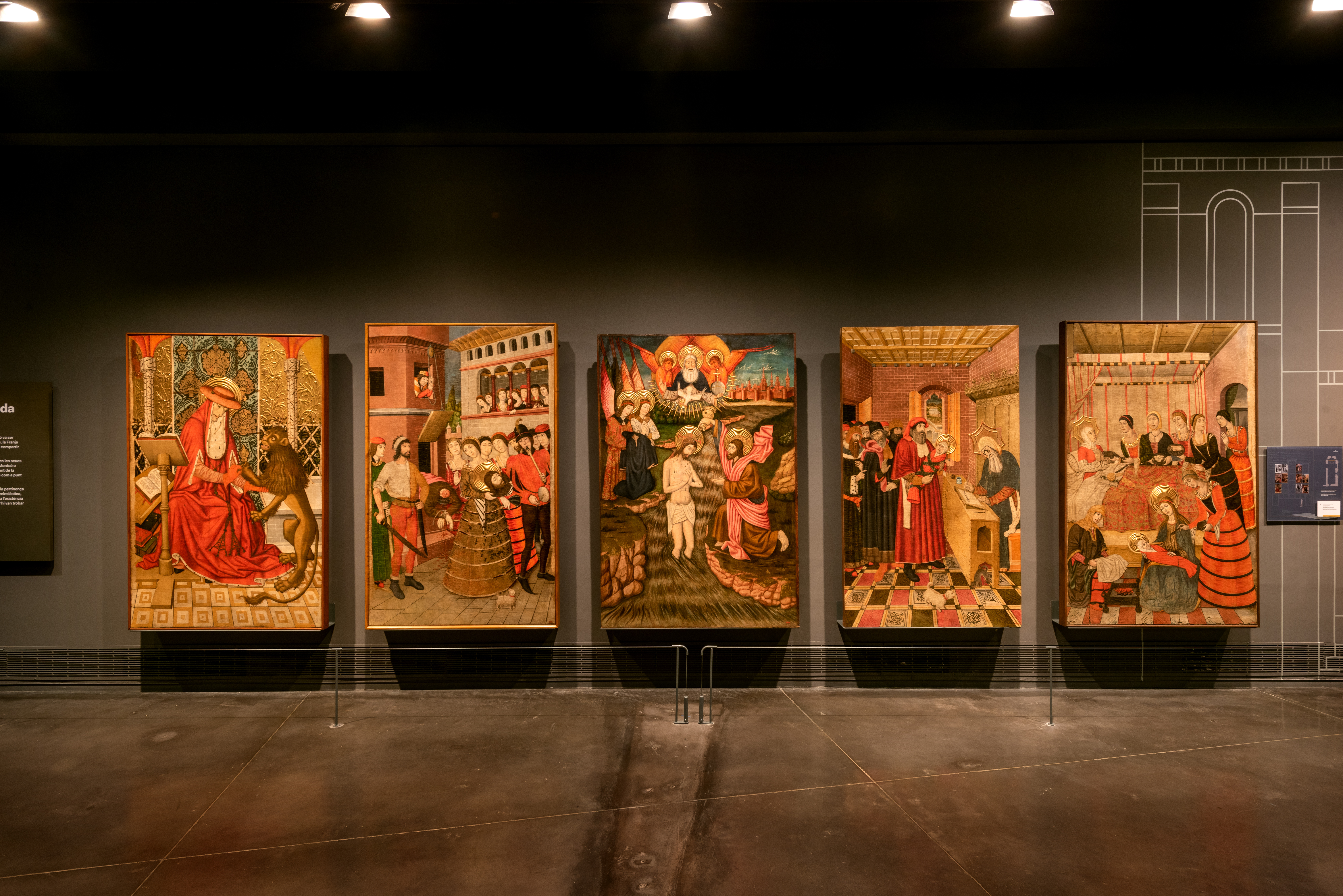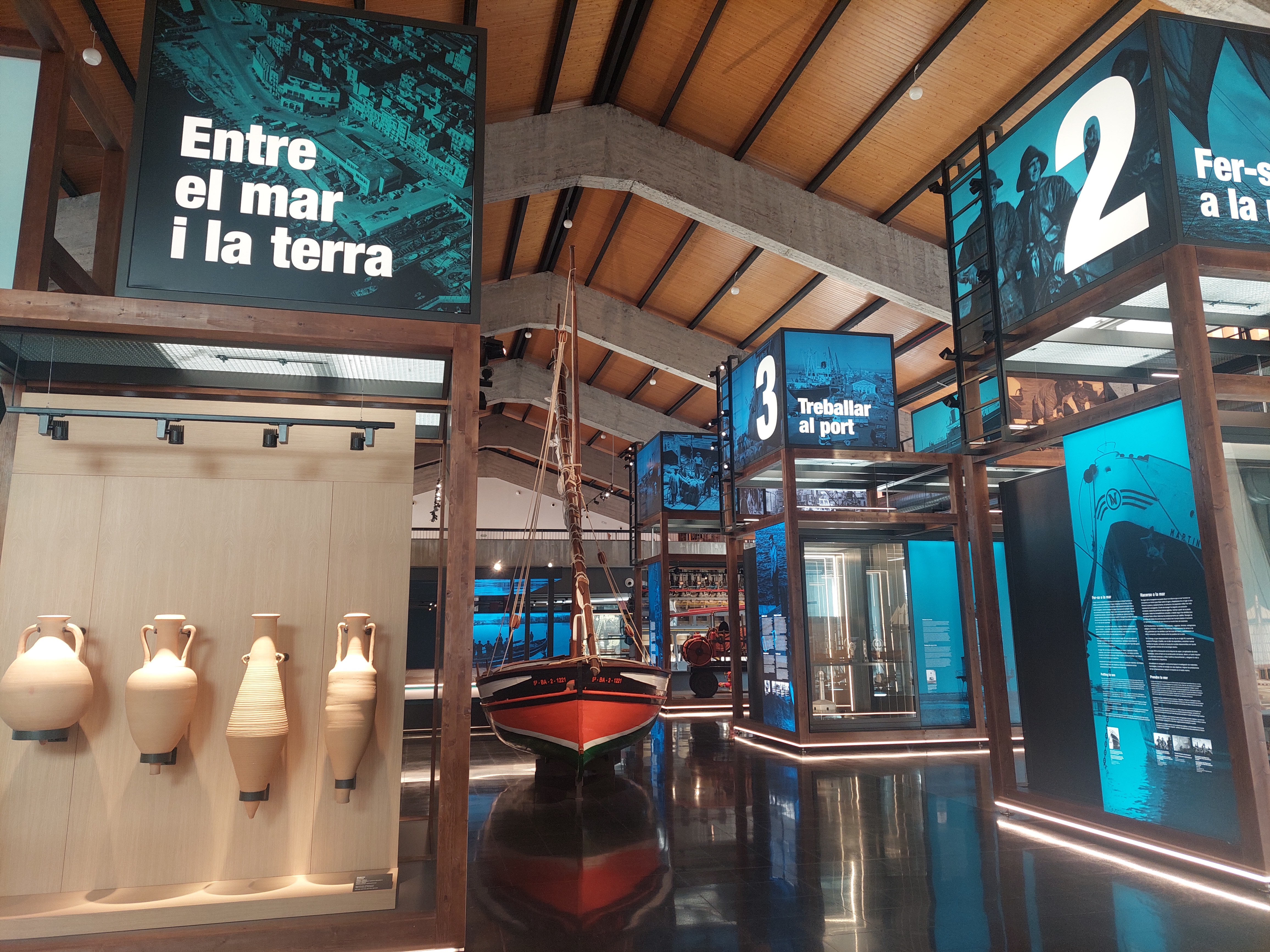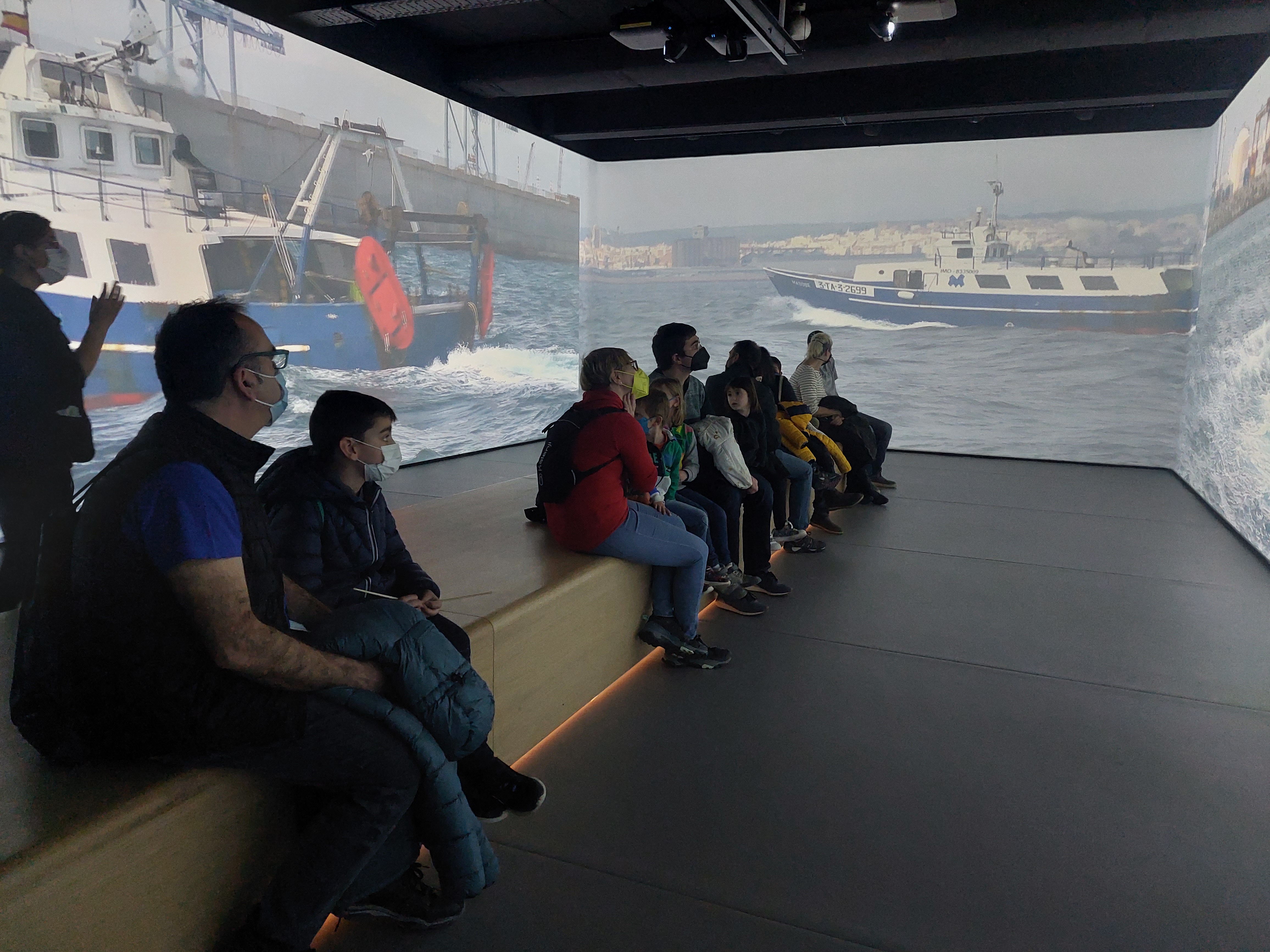We are once again preparing to report on the (permanent) museographic interventions carried out in Catalan museums in recent years. In this case, we talk about two extraordinary and (hopefully) atypical years—the years 2020 and 2021—the years of the Covid-19 pandemic, which has led to the suspension or delay of many museological projects in Catalonia and the drastic reduction of new inaugurations.
As always, let us remember at the beginning of these “chronicles” that since 2008 from the Mnemòsine magazine we have shared the latest museographic novelties in Catalonia for years (no. 5, 2008 and 2009; no. 6, 2010 and 2011; no. 7, 2011 and 2012; no. 8, 2012, 2013 and 2014; no. 9—in separate articles—2015, 2016, 2017 and 2018; no. 10, 2019). Now it’s time for 2020 and 2021.
As we have done so far, we will stick to publicizing already fulfilled museographic achievements—new museums or interpretation centers, or the renovation of permanent exhibitions in museums, monuments and related centers open to the public during these two years. For now, we will leave out the many projects that are currently underway or that have only been announced. We will also omit temporary exhibitions
The aim of these “chronicles” has always been twofold: to highlight the dynamism of our museums and also to put on the table the proliferation of new museographic projects (especially the local ones) that sometimes don’t even have the minimum necessary technical and professional requirements.
Since these “chronicles” are primarily based on press releases and web information collected and consulted throughout the last year, inaccuracies and expired assertions can always occur, as well as unintentional omissions on undetected projects. Once again, we apologize in advance for that. Any errors or omissions can be corrected immediately given the digital format of this magazine, so we invite you to send us any corrections or clarifications to the email address menendezpf@gmail.com.
As we always do, we offer a brief contextualization of the current political and institutional situation (2020 and 2021) in relation to museums, although in this case the main external agent has been, as we all know, the coronavirus pandemic.
As a consequence of the pandemic, museums had to close their doors, and later opened with strong precautionary measures and only a 50% of their capacity available (limitations that were not as harmful for museums as for other cultural facilities). However, some museums have not opened their doors again since the first forced closure. Activities aimed at the public were also cut short, especially those aimed at schools. This had very negative consequences from a labor perspective. On the other hand, museums have greatly increased their digital offer with pioneering and original experiences that nonetheless had little impact on the public due to the explosion of the whole online cultural offer and the competition it generated. All of this is already being analyzed by other colleagues and we will not dwell on it. Here, we are just referencing the new permanent or remodeled exhibitions in the time span of 2020 and 2021.
2020 has been a period of strong political instability in the Catalan Government, but after three years of extended budgets, the one for 2020 was approved. 2021 functioned with the extended budget of 2020, and now 2022 has a brand-new budget approved in December 2021 with an increment in expenditure for the cultural sector.
Changes at the top of the Ministry of Culture have also been frequent, with three different ministers between 2020 and 2021. The elections held on 14 February 2021 brought yet another change—the ministry changed hands from JuntsxCat to ERC, although this did not affect the team of the Directorate-General for Cultural Heritage.
From statements by the new Minister and by the Government Agenda, we can deduce an intention to present new laws of cultural heritage and museums (with no deadline, however) and the commitment of the Ministry towards the implementation of the Museums Plan. Although at first it seemed that a comprehensive heritage law would be developed, everything seems to indicate that a specific law on intangible cultural heritage will be debated in Parliament first.
During 2020 and 2021, the Museums Service of the Ministry of Culture continued to apply the Museums Plan (Museums Plan of Catalonia. Museums 2030), which was presented at the National Art Museum of Catalonia (MNAC) on 22 September 2017 but was not formally approved by the Government until 5 October 2020. The museums sector had a remarkable participation on the elaboration and the implementation of the Plan. Thematic and territorial museum networks have continued to work. In 2021, the Network of Natural Science Museums of Catalonia was set up. The figure of Territorial Support Museums was also implemented with six recognized centers: the Valls d’Àneu Eco-Museum (Esterri), the Terres de l’Ebre Museum (Amposta), the Ethnological Museum of Montseny (Arbúcies), the Museum of la Noguera (Balaguer), the Ter Museum (Manlleu) and the Museum of the Mediterranean (Torroella de Montgrí). The implementation of the Plan clashes with the content of the current Museums Act of 1990. That is why the Ministry proposed an amendment to the Museums Act (which was approved by Parliament) that gives legal status to territorial networks and territorial support museums within the framework of the Budget Support Act of 2022. On the other hand, a few museums continued to be registered, such as the Hydroelectrical Museum of Capdella, declaring sections of national museums (in the National Museum of Science and Industry of Catalonia system) and museums of national interest (the Víctor Balaguer Museum of Vilanova i la Geltrú in late-2019, the Diocesan and Regional Lleida Museum, and the Museum of the Pau Casals Foundation in El Vendrell). Subsidies to museums have increased, and an ERDF 2014-20 OP plan has been called for museographic projects. The RE-ORG program was launched to promote the reorganization of museum reserve spaces and preventive conservation. New studies have been published, such as that of museum management teams (the AMC also published its own on professional profiles), as well as the fourth AMC Handbook on strategic planning in museums. The National Photography Plan has been implemented, and a national policy for the acquisition of movable property (mainly in art) by museums has been consolidated. The Accessibility Plan has been approved. Training resources have been activated (accessibility, RE-ORG, and so on), and the Cultural Heritage in 3D digitization program for museum objects was promoted (Giravolt project).
The Catalan Cultural Heritage Agency (ACdPC), created in 2014, continued to manage the museums and monuments of the Catalan Government, with many projects to renovate its exhibition portfolio. Construction work is currently underway at the headquarters of the National Archaeological Museum of Tarragona (MNAT) at the expense of the Spanish Ministry of Culture. The Tabacalera Functional and Architectural Plan (which must include the new MNAT), which was commissioned in part by the Tarragona City Council and the Catalan Government and presented in February 2019, is in a critical situation. The old plan to create a single national history museum is still on standby, with no clear headquarters whatsoever. The 2017 Museums Plan still goes for it, now under the name of National Museum of Archeology and History (taken from the Archaeological Museum of Catalonia and the Museum of the History of Catalonia). The current proposal for a new museum is at odds —just like in previous plans— with the lack of a plausible venue, although in 2019 one was announced inside the Fira de Montjuïc. The extension of the concession of the Palau de Mar space as the headquarters of the MHC until 2024 (it was supposed to end in 2019) negotiated by the ACdPC in 2018 with Port of Barcelona offered some respite, but time is still passing. On the other hand, the ACdPC continued to intervene and restore the monuments it manages.
Regarding the whole Catalan territory, major museum renovations are proceeding very slowly. The ones at the Manresa Regional Museum have become more complicated and lengthier, but in 2021 the museographic project has already been put out to tender. Construction is still ongoing since 2019 on the Old Court of Lleida to install the new Jaume Morera Art Museum. This renovation has a cost of €4.4m and is funded by the Lleida City Council, the Catalan Government, the Spanish Government, the Lleida Provincial Council and the EU. The second phase of VINSEUM Museum of the Wine Cultures of Catalonia in Vilafranca is also advancing, as the Thyssen Museum in Sant Feliu de Guíxols (which just revived after years of paralysis) also is.
From 2022 onwards, the Sitges Museum Consortium is also planning on opening new venues (Can Falç and the reopening of the Can Llopis Romantic Museum); the remodeling of the Víctor Balaguer Museum in Vilanova i la Geltrú (reparations on air conditioning, sanitation and sustainability, and a new access); the new museographic presentation of the Conca Dellà Museum (with the creation of the Orígens Geopark, dedicated to paleontological heritage); the extension of the Art Museum of the Abbey of Montserrat; the extension of the Valls Museum (in the very same House of Culture); the creation of the Crater Space of the Garrotxa Regional Museum, in Olot; the remodeling of the Pau Casals Museum in El Vendrell; the launch of the Vic tanneries project; and a ton of new local interpretation centers.
On the other hand, other projects seem to be at a standstill, such as the new Girona Contemporary Art Museum (Casa Pastors), the Dalí Natal House in Figueres, the Catalan Basketball Museum in Badalona, or the Cornellà de Llobregat History Interpretation Center in Can Maragall. Other initiatives proposed in previous years are still completely still, such as the NEAN in Capellades, the Patum Museum in Berga, the Military Museum of the Figueres Castle, or the Comics Museum, initially planned for Badalona.
An inexplicable case is that of the newly created Human Tower Museum of Catalonia. Construction (and the museography), which had a very high cost, is completed since 2019, and the center’s management tender (consisting of a concession to a private company) was void. The museum remains unopened to the public.
Some of the projects carried out in 2020 and 2021, as usual, have been possible thanks to the contributions of the respective town councils, the Catalan Government, provincial councils, the Spanish Government, and ERDF funds. Thanks to these sources of funding, many municipal projects of “spaces” and interpretation centers and the like are still on to serve tourism, not always in sustainable way, and sometimes without a feasibility study and without a professional management plan.
As for the city of Barcelona, 2020 and 2021 have been unproductive in terms of investment. The new municipal legislature started in 2019 follows in the footsteps of the previous one (2015-2019), characterized by a rethinking in which the consolidation of existing centers has been prioritized over new projects. Let us remember that the period 2013-2015 was one of inaugurations: the Born CCM, the Sant Pau Hospital, the Design Museum of Barcelona, the Museum of World Cultures, the Montjuïc Castle Interpretation Centre, many territorial venues of the History Museum of Barcelona (MUHBA), and the Ethnology Museum of Barcelona. 2015 is the year in which the Mountain of Museum project in Montjuïc goes into crisis, and so do some of its derivative projects, such as the future Architecture Museum or the National Photography Center. The debate on the future use of the two palaces of the Fira de Barcelona (Alfons XII and Victòria Eugènia) has intensified in recent years, and it seems that the MNAC is winning the bid (by now they already got the Victòria Eugènia palace, pending a prohibitive investment), although one of them was also proposed as a large municipal exhibition hall.
The formidable debate that began in 2016 about the possible creation of a franchise of the St. Petersburg Hermitage Museum in Barcelona has intensified in 2021. This is a private initiative that has finally found its place: a site in the Nova Bocana at the Port de Barcelona’s facilities. Promoters obtained the concession of this site by winning a tender put out by Port de Barcelona. In 2018, the architectural project, designed by the prestigious architect Toyo Ito, was made public. Little was known about the museological part, but the commission of the well-known museographer Jorge Wagensberg inspired trust. However, his death in 2018 left the museological project void. For its part, the City Council paralyzed all relevant planning permits, based on four reports submitted in January 2020 (on their urban impact, their economic viability, their cultural fit, and their impact in mobility) that advised against the operation. The project won the support of some neighborhood, the business and the commercial sectors, as well as criticism from other cultural and neighborhood sectors. The museum sector itself (AMC) has been reluctant towards it, especially considering that the site is of public property (although the investment is private) and does not meet the needs of Catalan museums nor fits within the Museums Plan. On the other hand, the initiative contrasts with the lack of funding for existing museums in the city and in Catalonia. In 2021, a new attempt was made to find a more sustainable solution—an alliance between the Hermitage and the Liceu to embark in a multicultural project with the support of Port de Barcelona, but the idea was discarded by the administrations. In the end, it looks like the Liceu is opting for another location, the old IMAX. If they do not reach an agreement with the City Council, it is expected that the litigation will end in court (and therefore the site will remain paralyzed for years), as the developers will defend their right to build there in accordance with their concession by Port de Barcelona.
Another momentous debate was the expansion of the Barcelona Museum of Contemporary Art (MACBA) in 2019. As you will recall, the MACBA lost the battle to expand to the adjacent building of the Capella de la Misericòrdia (a transfer to the MACBA Consortium that was approved by the City Council in 2014) when the City Council decided to change its position and build a medical facility instead as a result of the pressure by local neighbors. It was clear that this unfortunate populist debate between health and culture could never be won by the cultural sector, especially considering that MACBA was labeled an elitist facility. The Catalan Government and the Barcelona Provincial Council intervened by seeking alternative solutions for the expansion of the museum. Finally, in November 2019, the “agreement” was made public. The extension would take place in a brand-new building placed in parallel to the current one and attached to the Convent dels Àngels (thus, occupying what is now a public square). The General Metropolitan Plan was amended in February 2020, and in April 2020 the MACBA formally relinquished the Capella de la Misericòrdia. The winning project for the corresponding tender was announced in April 2021. It was then announced that the new building would be finished by late 2023.
Other pending aspects of the museums of Barcelona are the use and prospects of the old centers of the natural science museums in the Ciutadella, the viability of a future museum of performing arts, and the planned construction works at the venue of the Picasso Museum.
Not leaving Barcelona, and in terms of democratic memory, the Barcelona City Council has not yet presented the museographic project of the Repression Interpretation Center planned for the old La Model prison. At the same time, some organizations and political parties are also calling for a similar center (to commemorate torture and repression too) at the current headquarters of the Spanish National Police on Via Laietana street, which would imply a change in the current usage of the building that the Spanish Ministry of the Interior does not like.
Unfortunately, in 2020 and 2021 we have not ceased to see more disputes over art pieces in the Aragon Strip and Sixena. After the infamous, judicially forced transfer that took place on the night of 11 December 2017 of the forty-four pieces from Sixena that were part of the collection of the Diocesan and Regional Lleida Museum, more judicial defeats were yet to come. In October 2020, the High Court in Huesca upheld the 2016 sentence of the Huesca Court of First Instance no. 2 by which the transfer of the MNAC’s mural paintings from Sixena was ordered. This transfer, if executed, would technically imply the destruction of the paintings. In January 2021, the Supreme Court rejected the appeals filed by the Catalan Government, the Lleida Museum and the MNAC, and upheld the Aragonese theses in relation to the ninety-six pieces from Sixena that had been deposited in the Lleida Museum and the MNAC in the 80s and 90s, and which had already been transferred to Sixena as a precaution. Finally, in February and March 2021, the Lleida Museum delivered to Barbastro the 111 pieces from the 116 parishes in the (Catalan-speaking) Stripe of Ponent (Aragon), which in 1995 were segregated from the Bishopric of Lleida and incorporated to the Bishopric of Barbastro-Monzón, when the Aragonese authorities demanded the provisional execution of the December 2019 sentence (which was not final yet). During 2021, the Diocesan and Regional Lleida Museum has redesigned and reformed its permanent exhibition, severely altered and mutilated by these relocations.
Another aspect of the museological current affairs over the last two years has to do with museum management. Many media echoed the various vacancies (or acting positions) that existed and were yet to be announced. In the debate, the AMC demanded transparent public tenders under the principles of merit, capacity, equality, publicity, and free competition, with project presentations and expert tribunals. It also criticized the summons for free appointment or those exclusively reserved for officials. Anyway, in 2020 and especially in 2021 the directions of the following institutions changed hands: the Maritime Museum (after more than three years since the vacancy was announced), the Sitges Museum (which in 2020 was under the management of an acting director who in late-2021 was replaced without having yet the vacancy), and the Palau Güell—all these three, under the umbrella of the Barcelona Provincial Council); the Music Museum, the Marés Museum and the El Born CCM (under the Barcelona City Council); the MACBA; the Solsona Diocesan Museum (technical direction), and the Episcopal Museum of Vic. Regarding local museums, we can mention, among others, the new managements of the Palau de Caldes d’Estrac Foundation, and the Terrassa Museums. In 2021, all those responsible for the Memory facilities (Democratic Memorial, Exile Memorial Museum in La Jonquera, and the COMEBE) have also been replaced following political criteria. Some museums in Barcelona (such as the Museum of Ethnology and World Cultures or the Tàpies Foundation) and local centers are still without a director. Others maintain an acting management, or even “share” their management (two registered museums, or a museum and an archive, with a single director).
On the other hand, some staff (either due to the pandemic or not) have suffered effects of the crisis such as the employment regulation files in the Poblet monastery, DOR Museum, and the Miró Foundation, or the closure of the Pottery Museum in Quart. We also saw some temporal employment regulation files following the Covid-19 pandemic (Dalí Foundation, Art Museum of the Abbey of Montserrat, and so on). This fact is linked to the chapter on closed museums. It is true that with the pandemic, many museums took a long time to reopen. In the end, however, the list of closed museums has been fortunately very short, and it does not include any registered museum. We are only aware of the closures—not because of the Covid-19 pandemic—of the Pottery Museum in Quart in December 2020 (according to the Town Council, it will reopen under a renew concept that goes beyond the museological one) and the DOR Museum in Sant Julià de Ramis (La Fortalesa closed in March 2021, but the museum was already closed months ago), which are not directly linked to the pandemic.
2020 has also been the year of the 25th anniversary of the Association of Museologists of Catalonia, although the proper celebration was held in 2021 with the publication of a book. The AMC, with almost five hundred members, has made a qualitative leap this year by creating a new section in the Balearic Islands.
2. Local museums 2.1. New museums and interpretation centers (municipal)An open-air geological museum called the Pirineus Geological Open Museum (PGOM) was inaugurated on 11 January 2020, an initiative by the Tremp City Council (Lleida) and the Cartographic and Geological Institute of Catalonia. Both institutions signed an agreement in June 2016 to place this open facility in the town. This museum seeks to bring to the public basic concepts about geology (especially the Pyrenees’) and the evolution of the Earth and life with a playful and didactic as well as scientific approach. The museum consists of three areas: the Stones Garden, located in the Barranc del Joncar park, where 13 representative blocks of rocks from the Pyrenees are exhibited with their corresponding information stands; the Geologic Times Avenue, located at Pompeu Fabra Street, which shows on the pavement, with many colors and also with information panels the evolution of the Earth and of life and the international table of geologic time, so that the 4.6 billion years of history of our planet are explained; and the Lighthouse, a 6 meter high tower made of rocks and steel gabions located between the two spaces mentioned above that marks the beginning of the route. One of the objectives of the project was to strengthen the candidacy of the Tremp-Montsec Basin for the Unesco as the second geopark in Catalonia (the first one, recognized in 2012, is in Central Catalonia). In April 2018, the geopark project, branded as Orígens-Pirineus Catalans, was recognized by the Unesco with its World Geopark stamp. The new geopark would cover 2,000 km2 in nineteen municipalities and four counties. Returning to the PGOM project, this is Tremp’s new commitment to geological museography following the 2013 launch of the Pallars Jussà L’Epicentre Visitors Center, an interpretation center of 700 m2 created by the Regional Council aimed at boosting tourism in the area, funded with an ERDF and by the Lleida Provincial Council. It finds its origins in the former Regional Museum of Natural Sciences of Tremp.
The new Interpretation Center of the Central Catalonia Geopark in Montserrat opened its doors in August 2020 with a formal inauguration on 17 December. This space explains to visitors the history and geology of the Montserrat mountain, highlighting its natural, cultural, and landscape exceptionality and linking it to the Montserrat Natural Park and the whole territory of the Central Catalonia geopark. The project has the support of Ferrocarrils de la Generalitat and the Montserrat Abbey. Work is underway to open another geopark center in Sallent (Barcelona).
The Archeology Museum. Ramon Boleda Collection was inaugurated on 25 January 2020 in the Sant Bernat Room of the Verdú Castle (Lleida), following an initiative of the Verdú Town Council. The center shows a selection of the most significant pieces of the archaeological collection of Ramon Boleda, a collection that he donated to the town of Verdú in 2004. This collection includes objects from many sites in the area and from other municipalities in the Urgell region and neighboring counties. Previously, Boleda used to exhibit them in the old Verdú Hospital, where the collector himself showed them following an agreed timetable.
On 30 January 2020, the Maldanell Space was inaugurated in Vallbona de les Monges (Lleida), an interpretation center for the natural ecosystems and biodiversity of the Maldanell Valley focused on the birds in the area. The Maldanell Space occupies the ground floor of the old oil mill’s building, which dates from the 17th century. In fact, the remains of this mill were discovered precisely during the renovation works on the structure of the building to set up this interpretation center, which cost €60,379 and was financed with LEADER European funds.
Since 7 February 2020, the Ramon Fernández Jurado municipal library in Castelldefels (Barcelona) is hosting the permanent exhibition “Prehistory Space. Fauna, climate change and archeology in El Garraf,” which is promoted by the Castelldefels City Council and the University of Barcelona. It contains some of the archaeological remains found by the SERP team at the University of Barcelona in the Castelldefels’ Rhinoceros Cave. It is an interactive exhibition aimed at showing what the climate, the environment and the fauna were like in this territory 100,000 years ago and features augmented reality tools and 3D virtual reconstructions. The exhibition shows various remains of wildlife from this period. Its centerpiece is the complete skeleton of a 100,000-year-old elephant cub. Two teaching cabinets designed by the DIDPATRI research group at the University of Barcelona have also been installed for school visits.
On 6 March 2020 the permanent exhibition “Bulding the territory. Traditional architecture and landscape in Catalonia” was inaugurated at the Sant Llorenç del Munt i l’Obac Natural Park Information Center in Mura (Barcelona). So far, this display had toured from 2015 to 2019, but now it has been permanently settled in Mura as a result of the agreement signed between de Ramon Muntaner Institute and the Mura Town Council.
On 11 March 2020, the Vila-seca Town Council (Tarragona) opened to the public the new Vila-seca Castle Cultural Center. It includes an interpretation center for the repopulation of the Camp de Tarragona area that was promoted by Ramon d’Olzina in the 12th century, and it will be associated with a modernist winery next door as a room for sociocultural activities. The rehabilitation project of the castle cost about €4m. Another new space inside the castle that is already open and also had an inauguration ceremony is the one that the Town Council relinquished to the Vila Casas Foundation. This space presents the temporary exhibition “The Resistance of the Signs,” including engravings by Antoni Tàpies printed at Joan Roma’s workshop. The agreement between the Town Council and the foundation is for a period of four years and will involve the assembly of yet another seven exhibitions on contemporary art. So, with this new center, the foundation has now five spaces—two more in Barcelona (Can Framis and the Volart Spaces), one in Palafrugell (Can Mario), and yet another one in Torroella de Montgrí (Palau Solterra).
The inauguration of the Memory of the Vineyard and the Wine Municipal Museum took place on 3 July 2020 in Sant Fruitós de Bages (Barcelona). In fact, it is a small permanent exhibition on wine installed on the ground floor of Can Casajoana, a private building that has been leased for thirty years to the Town Council as a municipal museum. It is promoted by the Town Council with support from the Cultural Heritage Office of the Barcelona Provincial Council, which act an advisor and funded part of the museographic project. The Town Council is currently working on the second phase of the museum located on the first floor. Back to the wine museum, this installation has pieces from the Rectory Museum, a collection of ethnological and everyday life pieces lent to the Town Council in 2017 by the Collective of Historical Research (the local entity that the collected it and cared for it since 2006) to have them transferred into a municipal museum. This very group will take part in the management of the new museum. In Sant Fruitós, the vineyard, wine, and its derivatives (such as anise, liqueurs, and spirits) were of great importance. As a curiosity, the very next day a second inauguration took place under the lead of the previous mayor, who had been replaced just a few days before as a result of vote of no confidence.
On 31 July 2020 the inauguration of the Women’s Museum took place in Tossa de Mar (Girona) at Can Ganga, a new specialized center promoted by the Tossa City Council in collaboration with the Tossa Institute and Tossa TV. Can Ganga (or Can Leandro) is a 16th century fortified house that was one of the first buildings erected outside the walls of the city. This project is intended to highlight and acknowledge the role of women in Tossa’s past. On 17 July 2021 the center opened the first floor to the public with a new digitization of their story. This space, known as “Women at Sea” and “Women at Land,” contains the ethnographic story about the different professions related to the sea and the countryside practiced by women in Tossa before the arrival of tourism. This narrative is digitized through a touch device that contains all the information inventoried on the exhibited pieces on this floor and two documentaries with interviews and images. Ten women from Tossa between the ages of thirty and a hundred years old share their experience working in the countryside or fishing. On the other hand, the Women’s Museum offers a guided walking tour around Tossa called “Tossa through the Eyes of a Woman.” The Can Ganga estate is a property of the City Council since the early 2000s. Currently, it has two out of its three floors equipped. These two equipped floors analyze the role of women in the village before the onset of tourism. From 2022 onwards, the exhibition will be expanded with “The Kitchen and Quotidian Work” and “Women and Their Devotions.” Finally, during 2022 and 2023 this exhibition will be completed with the new space on the third floor, which will show the decisive role played by women in tourism, an economic activity that allowed the town to leave the postwar period and went on to the present day. At the same time, the Tossa City Council is promoting a new museum (the Museum of Catalan Coastal Cuisine) while its lifelong municipal museum is languishing. (It was actually about to leave the Museums Register due to serious deficit).
The virtual project of the Cabrils Community Museum or COMCA (Barcelona) was presented on 8 October 2020. This is an entity that bears the name of a museum but does not have much to do with walls nor objects, but with people and memory. It wants to digitally preserve and generate knowledge about the local cultural and natural heritage.
The new Pla del Bages Wine Tourism Center was inaugurated on 13 March 2021 in Navàs (Barcelona), in the building of an old slaughterhouse by the road to Castellet. It has a permanent exhibition on the world of vineyards and wines that introduces the vineyard and winemaking cycle, as well as the many varieties and characteristics of the wines of this land. It also has a screening room where videos related to the wine history of the region are displayed, a shop where different wines and local products can be purchased, and a space dedicated to wine tastings.
On 3 April 2021 the Land of the Esterregalls Interpretation Center was inaugurated in All, in the municipality of Isòvol (Girona). This center explains the geological phenomenon of the “esterregalls” in All, a great example of badlands, ravines created by runoff water that drags the finer or less cohesive alluvial materials that fill the plain. These are forms of erosion that can be seen 500 meters away from the road. They offer very funny structures commonly known as “esterregalls d’Olopte-All” (Olopte-All badlands), called “crowned pillars,” “witch hats,” or demoiselles coiffés by geologists.
On 27 May 2021 the new Cultural Heritage Interpretation Center in Sant Pere de Ribes (Barcelona) open its doors in the Ribes Castle, owned by the municipality. The Castle is an element that was recently recovered and rehabilitated by the Town Council following a plan based on a preliminary project by the Cultural Heritage Office of the Barcelona Provincial Council. The center analyzes the local heritage and its sights and interprets the medieval castle itself. It also includes a portion of the castanets collection belonging to dancer José de Udaeta (and preserved by the Theater Institute of the Barcelona Provincial Council), who lived in the castle for many years and took care of it. In fact, the center and the opening ceremonies have all been dedicated to his memory.
On 18 June 2021 Piràtia was inaugurated, the new Interpretation Center for Piracy and the History of Castelldefels (Barcelona), an immersive, didactic, and informative exhibition on piracy located in the Castelldefels Castle. The Castle, after having been restored and updated over the last decades (works went on for more than 30 years since 1988, when the City Council acquired the estate with a total investment of more than €8m from the City Council of Castelldefels itself and the Barcelona Provincial Council), has virtually reached its full recovery and is now entirely open to the general public. Besides its large gardens and outbuildings, a new addition has been made with an attractive audiovisual experience aimed at family audiences and focused on the piracy in the Mediterranean, a struggle that many coastal towns including Castelldefels endured for almost three centuries. In the stables on the castle’s ground floor visitors will take part in the experience of sailing from Algiers on a pirate ship, entering the hold of the ship, attending the harangue of the ship’s captain Dragut, and getting to know the function of the defense towers and the chronology of four of the many pirate attacks suffered by Castelldefels in the 16th and 17th centuries. All this through a series of screenings and games performed in the chapel, where a large audiovisual display approaches the struggles of the villagers who repelled the pirate attacks. On the other hand, the Interpretation Center complements the visit to the castle—on the main floor, objects from the 19th century (when the Girona family decorated the castle with the artistic ambience of the time in the midst of the Modernist era) are exhibited; the chapel shows how the architectural ensemble played a role in the Spanish Civil War in the 20th century; and in general the whole historical evolution of the castle is shown, with structures ranging from an ancient Iberian village and a Roman villa to the residence of the Gironas (back when they bought the castle in 1897), the Romanesque church of the 10th century, the fortifications of the 14th and 15th centuries, the different rooms of the 14th and 18th centuries, and the gardens. The management and marketing of visits and activities to the Castelldefels Castle are carried out by the Advanced Leisure Services company (ALS), which also manages the Gaudí Crypt of Colònia Güell, the Montjuïc Castle, the Moja Palace in La Rambla, and the recently remodeled Barcelona Wax Museum, among others.
On 18 June 2021 the Gaià River Interpretation Center was formally inaugurated. It is located in the Sant Ramon del Catllar Chapel, on the outskirts of the town of El Catllar (Tarragona), on a hill nearby the Gaià river and the historic industrial site of La Fàbrica. The La Sínia Environmental Association will take care of the center’s management. There, visitors will find two exhibitions—one on environmental issues entitled “The Gaià River Basin. Water passage, territory, and biodiversity,” and a second one on local heritage entitled “The Manufacturing complex of El Catllar,” which includes several models. The Gaià River Basin Xylotheque, a collection of wood pieces from the main trees and shrubs in the basin, is also to be found in the center.
In September 2021, as part of the resumption of archaeological visits to the Puig de Sitges, a small museological space was opened to the public on the ground floor of the Sitges City Hall (Barcelona). In this space, original structures recovered from the excavations carried out a few years ago were preserved, including walls from the medieval period (14th century) and constructions from the 18th and 19th centuries related to the processing of grapes. The space has been completed with information panels and display cases containing materials from the Iberian (3rd-1st centuries BC) and Roman (1st-3rd centuries AD) silos located in this area. The narrative focuses on the evolution of the Puig de Sitges in antiquity.
On 16 September 2021 the Textile Interpretation Center of El Pla de Santa Maria (Tarragona) was inaugurated as part of the Wind Fair. The Textile Interpretation Center (CIT) is located, together with the Agricultural Museum, inside one of the buildings of the old textile factory in town, built by the company Martí, Llopart i Trenchs between 1916 and 1917. The Agricultural Museum and the site of the old factory have been displaying exhibitions and collections for some years, but now the complete musealization of the CIT has been inaugurated. The inauguration event coincided with the inauguration of a mortars of all kinds exhibition at the Agricultural Museum too. Restoration work on the factory complex (officially declared BCIL, that is, Local Cultural Heritage Asset) took place in 2020 with help from an ERDF fund. The same ERDF project also included the musealization of the Textile Interpretation Center installed inside the old factory to highlight looms and other elements of a textile factory. It is a large industrial complex that includes the factory (four large industrial units with a double pitched roof, and twelve more with a sawtooth roof and modernist elements), the chimney, the owner’s house, the pond, the workers’ houses, and the land itself. The company employed many people in and around the town. The factory was operative up to 1998. Then, in October 2001 the Town Council acquired the estate and proceeded to demolish part of the already dilapidated industrial complex in order to work on its rehabilitation. At the CIT there are several hundred-year-old machines used in the textile industry (looms, warpers, and so on) and once restored by José Luis Baldor, a former worker of the company, that now can be seen working. The center also offers detailed information on the history of the factory and the manufacture of fabrics. It has an audiovisual room too.
On 18 September 2021 the restoration and musealization of a fishermen’s hut in La Creu, L’Escala (Girona), was inaugurated. This small new facility is part of the Anchovy and Salt Museum. It joins the list of heritage routes organized by the museum under reservation. The hut, popularly known as “the Black Man’s Hut,” has been musealized with fishing gear provided by families from L’Escala such as handles, oars, nets, and other fishing equipment. The owners relinquished the hut to the L’Escala Town Council in 2020. The hut is located in the area known as La Creu, where there are four huts that form an interesting ensemble close to the town center. The first hut (the “Black Man’s Hut,” the one that is visited nowadays) was built in 1948 by digging into the rock; in 1955 the second one was made; the third one came in 1958; and in 1960 the fourth one. Fishermen’s huts or shops are preserved along the whole coast. They were built along the dry docks where boats were moored in order to ease the loading and unloading of fishing gear to be stored inside. This ensemble of huts is part of a dossier on a set of buildings in L’Escala that are in the process of being declared BCIN (Cultural Heritage Asset of National Interest) in the category of “Area of Ethnological Interest” by the Ministry of Culture of the Government of Catalonia.
The new Pyrfer Interpretation Center and the Water and Iron Route were inaugurated in Campdevànol (Girona) on 2 October 2021 as part of the 4th Campdevànol Metal Biennial Fair. This route, starting from the center of the town, presents twelve key points of interest in the history of Campdevànol with an information panel each. These three actions (the center, the route, and the fair) had a budget of €121,500. It was a project aimed at strengthening the legacy of iron and water in Campdevànol and at recovering a part of the town history that was invisible. The center, described as “cross-border,” is located at the old Molí Gros (Big Mill) of Campdevànol.
On 16 October 2021 the renovation of the Penyafort Castle’s cellar in Santa Margarida i els Monjos (Barcelona) was inaugurated—a space of 256 m2 that is part of this large architectural ensemble owned by the municipality since 2002. This large building (which has been the subject of successive phases of rehabilitation ever since by the City Council with the support of the Barcelona Provincial Council) houses several facilities, including an extension of the CIARGA (Interpretation Center of the Republican Aviation and the Air Warfare) consisting of its prisons. A transhumance interpretation center is also planned to be built in the future. The remodeling works of the cellar (which have involved an investment of €100,000 provided by the Barcelona Provincial Council through the Local Architectural Heritage Service or SPAL) imply that this venue will have a large multipurpose room for all kinds of uses, from small format activities to larger events.
On 16 October 2021 the Graphic Museum of Ancient Dolls was inaugurated in Benavent de Segrià (Lleida), a space created from a collection donated by neighbor and collector Adriana Vara comprised of more than two hundred pieces dating from the time span between 1860 and 1900. Newer dolls are also to be found, like the Nancy’s or the Barriguitas from the 70s of the last century, as well as all kinds of accessories from different eras—prams, highchairs, furniture, chairs, other toys, and so on. The collection is located in the building next to a nursery owned by the Town Council, which has promoted the project together with the collector.
On 19 November 2021 the Montsec Interpretation Center was inaugurated in Meià (Lleida). This is a new facility that has two exhibition rooms showing fossils that testify to the origin of the Montsec Range. First of all, the Garcia-Castellanos collection donated to the Town Council is on display, which allows the visitor to follow the geological history of that place when it was actually under the sea at the end of the Cretaceous. A set of exceptional fossils of animals and plants that lived and died in a freshwater lake 125 million years ago is exhibited too. Actually, the sites of La Pedrera de Meià have made it possible to describe more than a hundred new species, including a small flying dinosaur. The center is one of the facilities that receive support from the Museum of La Noguera (based in Balaguer) as a Territorial Support Museum.
On the other hand, a new semivirtual museum has been created in Catalonia, the Trails Museum. Its goal is to preserve and disseminate the complete network of trails in the Pyrenees either maintained or recovered in the Siarb Valley (Lleida). The aim of the museum is to connect, articulate, enhance and disseminate the historical, natural and cultural legacy that has permeated the Siarb Valley for hundreds of years through its trails. Since April 2021 the museum has an operational website. The launch of this new web allows visitors to learn everything there is to know in order to enjoy this space. One of the most important sections of the website is the many different options to visit the museum such as free tours for which the space suggests several itineraries to follow. Moreover, guided and theatrical tours are also available. The museum also offers a detailed map of each and every single trail in the area, as well as a collection of cultural and scenic points of interest that can be found while strolling through the region. There is also a research space, several collaborations with universities and old documents. By late-2020 the initiative of the museum was awarded the Lluís Carulla Prize for its transformative value.
2.2. Existing registered museums Extensions or remodelingIn March 2020, the Thermalia Museum in Caldes de Montbui (Barcelona) opened to the public a renewed permanent exhibition on thermalism on its second floor. Remodeling work began by dismantling the previous exhibition space, which dated from 2006. The new permanent exhibition is divided into six areas and includes new spaces and new visual and aural resources and is connected to the thermal route (guided visit) that takes place in the city. The showing also includes views on other commodities and activities produced in Caldes, such as Sanmartí noodles or Codina yoghurts, which use thermal water for their production process. Fountains, sinks and spas are also explained, as well as the Roman background and the medicinal characteristics and properties of the water of Caldes. A couple of videos complement the experience. The visit to the museum ends with the “Sit down and enjoy” space, which acts as a disconnection area to start enjoying the prescribed rest at the spa. This last space works as a link to the visit on the museum’s third floor, where the work of Manolo Hugué is presented.
Since 24 April 2021 the Museum of Badalona expanded its offer of open spaces from the Roman era with the inauguration of the House of the Ivy, a new space bigger than 550 m2 that joins the nearly 54,000 m2 that can be visited in the Roman city of Baetulo. The House of the Ivy is a well-off domus from the 1st century AD located at 55 Lladó Street, near the Dolphins House, musealized in 2008. Both houses were separated by the “cardo maximus.” The House of the Ivy was discovered in 1999. Rehabilitation work began in 2007. It was possible to do so thanks to an investment from the Spanish Ministry of Culture. On the other hand, on 28 October 2020 the museum inaugurated the partial renovation of some showcases in its permanent exhibition “Baetulo, Roman City” on the occasion of the tenth anniversary of the musealization of the Termes-Decumanus archaeological site. In this way, the most emblematic pieces discovered in the last ten years are made known. Lastly, the Badalona Museum will continue offering visits to the Modernist factory where Anís del Mono (an old brand of Catalan anisette) is made, although in 2021 the brand (belonging to the Osborne firm) announced the relocation of most of its production outside Badalona and Catalonia.
On 17 July 2021 the Archaeological Garden of the Formós Castle was inaugurated under the Museum of La Noguera’s management in Balaguer (Lleida). After being closed for ten years, the Archaeological Garden of the Formós Castle (from the 9th to the 15th centuries) reopened its doors with a new musealization and new spaces. The new roof that protects the great chamber was also inaugurated. It was made with funds from the LEADER program.
On 5 September 2021 the Regional Museum of the Conca de Barberà in Montblanc (Tarragona) opened the doors of its newly remodeled spaces after a few months closed. The access was restructured (placing the offices in one of the rooms) and the other floors were rearranged to become more functional, having some of their rooms relocated. New lighting was installed. This investment was possible by the help of European funds. The first floor now focuses on the Vimbodí Salt Mill, where the importance of this site is explained. The medieval part of the facility received some new pieces that were in other rooms. The storytelling has also been updated, adding inclusive and gender-sensitive narratives and incorporating QR codes to enable access to specialized content.
On 6 November 2021 the museographic improvement works of the La Gabella Ethnological Museum of Montseny (MEMGA) were inaugurated in Arbúcies (Girona). Its new rooms are the result of renovation work on the building, which has made it possible to improve the route of the visit and, above all, to focus on the museographic updating of its different spaces, where the industrial model of the Montseny is described—turning, bodywork, and textile. The story of everyday life, the textile world and women’s work were strengthened. Meanwhile, the rooms on the second floor were adapted to explain the world of industrialization with a much more modern and open museographic approach. Three particular spaces of the new MEMGA should be highlighted: First of all, the space dedicated to the legends of Montseny and to everyday life. This area revolves around the scenic recreation of a large fireplace, the place in the house where these legends were told and transmitted. Secondly, the space of the 1923 eleven-seater bus by Ayats bodywork, the most emblematic piece of the museum that now occupies the central space on the second floor on its own, gaining visibility and accompanied by an audiovisual production. And lastly, the new textile room, which rounds up the narrative of the industrial model in Arbúcies, originated at the late 19th century, with a large loom over 150 years old. The remodeling project also involved the restoration and insulation of the building’s roof and the remodeling of the museum’s electrical and air conditioning systems. The space dedicated to temporary exhibitions on the ground floor was expanded too, reaching an area of approximately 150 m2 with the addition of a new room. The whole executed project has an area of approximately 500 m2 out of the 2,000 m2 of the MEMGA. It cost €545,000 funded with ERDF funds, the Girona Provincial Council, the Ministry of Culture of the Government of Catalonia, and the Arbúcies Town Hall.
On the other hand, the Arbúcies Town Council and the Regional Council of La Selva are carrying out the project “Tourist-cultural product Viscounty of Cabrera,” which involves thirteen municipalities of La Selva and aims to disseminate the tangible and intangible heritage of the old Viscounty of Cabrera. On 30 July 2021 a small Interpretation Center of the Viscounty of Cabrera came into operation in the Montsoriu Castle (managed by the Museum of Arbúcies), as well as the new web portal La Ruta dels Cabrera. Within the project’s framework, the signposting of thirty-eight heritage elements and five self-discovery routes has been carried out and ten virtual recreations have been produced. The Montsoriu Mayoralty Dissemination and Research Center, or Interpretation Center of the Viscounty, is still under construction in Arbúcies, right next to the La Gabella Museum.
On 28 November 2021 took place the inauguration of the exhibition “One Museum, a Thousand Plots”, a long-term exhibition (two years at least) offered by the Terrassa Documentation Centre and Textile Museum (Barcelona) to commemorate the 75 years of the Terrassa Textile Museum. The exhibition is a unique opportunity to get a closer look at what all these years of the museum’s journey have been like. A selection of the most paradigmatic pieces in its collection is on display, as well as an account of the work done to recover, document, restore and disseminate the valuable material textile heritage it preserves. The exhibition is divided into 11 areas plus a chronological line as an introduction, and it includes 110 fabrics from the 1st to the 20th centuries, 33 dresses from the 18th to the 20th centuries, 33 accessories (bags, stockings, hats, gloves, fans, and so on), 10 pieces of liturgical utensils (a raincoat, two chasubles, two fronts, maniples, and palls), lots of samples from 17 different companies, and 22 bibliographic documents. A 416-page catalog was published on the occasion of the exhibition, with all the pieces in the exhibition photographed and cataloged as well as complementary texts on the history of the museum and its collection. The Terrassa Textile Museum is the dean of all Catalan textile museums. It preserves more than 130,000 miscellaneous objects, including fabrics, clothing, accessories, samples, designs, and so on from numerous collections. They all tell the story of textiles from the 1st century AD to the present day. It is managed by a consortium between the Barcelona Provincial Council and the Terrassa City Council.
The Museum of L’Empordà in Figueres (Girona) was closed due to improvement reforms for a few months in 2021. To ensure that some of the collection could continue to be visited, it was decided to disperse a part of it and have several works lent to various Catalan museums. This is how the project “Exhibited for renovation. The Museum of the Empordà in Catalan Museum” was born. This project distributed twenty-four works of the Museum of L’Empordà to six different facilities of the Network of Art Museums of Catalonia: the Art Museum of Cerdanyola, the Girona Art Museum, the Tarragona Museum of Modern Arts, the Museum of La Garrotxa, the Museum of Lleida, and the Víctor Balaguer Museum in Vilanova i la Geltrú. On the other hand, the museum team is designing the museum’s new permanent exhibition based on participatory processes with the community. They recently presented their project at the 6th Conference of the Public Observatory of Cultural Heritage of Catalonia “Relevant Museums for the community. Tools for Citizen Participation” (Barcelona, 30 November and 1 December 2021).
2.3. Existing (unregistered) collections and interpretation centers. Extensions or remodelingOn 6 March 2020 the Mas Miró, Joan Miró’s summer house in Mont-roig del Camp (Tarragona), opened its doors again with new spaces to visit. Once the second phase of the building’s refurbishment was completed, the kitchen and carriage entrance were open to the public for the very first time. The renovation, which kept the Mas Miró closed for just over three months, also made it possible to install a lift to improve accessibility and to display a video at the beginning of the visit. These interventions cost more than €240,000. They prioritized the restoration of several rooms in the house and the removal of moisture. One of the future projects in the estate is the rehabilitation of the farmers’ house, which will be undertaken in a third phase of work that does not have a starting date yet.
On 28 March 2021 the expansion of the musealization of the Trinity Castle in Roses (Girona), inaugurated on 14 September 2019, opened to the public. The Bosch Gimpera Foundation and the DIDPATRI team of the University of Barcelona, authors of the project of didactic museography, incorporated three new figures, three new pieces designed by sculptor Mar Pongiluppi representing the governor of the castle, a soldier and a baker working on her bread respectively—three scenes that portray the daily life of the fort during the 16th and 17th centuries. This culminates the project of the Roses City Council to musealize this 16th century fortification located at the entrance of the city, and to include it on the circuit of cultural visits to the town.
While the rehabilitation work on the new Manresa Regional Museum (Barcelona) goes on, on 10 April 2021 the renovated Space 1522 was inaugurated—the Ignatian Manresa Interpretation Center, a space that explains how was the city that hosted Ignatius of Loyola almost five centuries ago. This renovation made it possible to update and expand (about 60 m2 towards the south wing) the interpretation center and make other improvements in accessibility and climate conditioning. Space 1522 is located on Mestre Blanch Street, in the Conservatory Theater building. It was inaugurated in December 2015 after some work was carried out on the east wing of the cloister of the old convent of the Sant Domènec Dominican friars, a building where Ignatius of Loyola stayed on three different occasions. With this new intervention carried out in recent months, which had a budget of €99,928.35 (including VAT), the interpretation center was expanded through the partial recovery of the south wing, a space that was not being used. This made it possible to adapt the space for people with mobility issues thanks to new internal ramps, and to recover the old lockers of the conservatory, which were used for storage and now host a small office. In this new space, the exhibition of the work “Our Lady of the Rosary offering the rosary to Saint Dominic de Guzmán” was presented, a panel of forty-two polychrome ceramic tiles from the 18th century.
On 5 June 2021 took place the inauguration of room 6 at the Cerdà Museum in Puigcerdà (Girona) entitled “Conventus.” This new permanent exhibition located on the –1 floor of the museum invites the visitor to learn about the history of the convents of Puigcerdà, closely linked to the town’s urban evolution, and to delve into the daily life of the Carmelites convent. The space has been divided into three subspaces: the first one deals with the main monasteries of Puigcerdà; the second shows the evolution of a cloistered convent of the barefoot Carmelite nuns; and the third contextualizes the ancient crypt of the convent, introduces the ritual of death to the visitor, and analyzes the history of the convent with an audiovisual production.
On 10 July 2021 the Town Council of Riudoms (Tarragona) reopened Antoni Gaudí’s Casa Pairal with a new visiting experience under the slogan “The strength of origins.” A reformulation of the spaces in the house in recent months was undertaken, with a new approach to the father’s boiler workshop, a new immersive mapping, a new space to receive visitors, and an exhibition of drawings and unknown objects. Through guided tours, visitors will be able to discover in a graphic and simple way the little Gaudí, the teenage Gaudí, and his relationship with Riudoms and his origins as a source of inspiration for his architecture.
Conversely, in July 2021 the Municipal Museum of Santa Perpètua de Mogoda (Barcelona), located in the cultural space of La Granja Complex, closed its doors for good. The Town Council is working on the Museum of Work and Living Industry (MTIV), which will be installed on the first floor of the rehabilitated Vapor Aranyó facility. It will be inaugurated on a date yet to be determined. The room that the museum used to occupy up to now will be transformed into a dance classroom for the Municipal School of Arts (EMA). The exhibition halls of cultural space La Granja will remain open. This project is co-funded with Catalonia’s ERDF 2014-20.
As of 1 September 2021, the Museum and Glass Oven of Vimbodí i Poblet (Tarragona) reopened after spending a few months closed because of the Covid-19 pandemic with a new display of how glass is worked on, which is the center’s main museographic goal. The museum starts a new stage with Rafa Abdon as the new resident glassmaker, taking over from Paco Ramos, who, after twenty-five years in office, is retiring, giving way to a new generation. Rafa Abdon started as a glassmaker at the age of fifteen in his father’s factory, located in L’Olleria, a town with a long tradition in this field. Abdon is known for being the author of the grape and tulip decorations that surround the altar of the Sagrada Familia. He will now be in charge of the museum’s weekly glassblowing demonstrations, a task which, unlike his predecessor, he will not perform as a self-employed worker but through a public concession lasting two years and renewable for another one. By doing this, the Vimbodí i Poblet Town Council hopes to give greater importance to the profession and to achieve international reputation.
In early November 2021 Vilafranca del Penedès (Barcelona) opened its renovated and expanded Town Festival Centre, a facility that closed years ago. After being tangled in endless renovating works in recent years, with delays caused by the bankruptcy of one of the companies that were awarded the project and later on by the pandemic of the Covid-19. This facility has been remodeled and expanded with an investment of €1m between the civil works (€600,000) and the museographic project (€400,000). The previous surface, which was of 312 m2, has doubled up to 662 m2, with a newly built annex building facing Muralla dels Vallets Street, which is the entrance to the equipment, consisting of a ground floor and three extra floors. These different spaces will be used to get to know and interpret the town festival as well as the folkloric and festive heritage of Vilafranca, including its castles. The reception and the shop are located on the ground floor. On the first floor visitors can access the main hall of the old market, where almost all pieces and elements of the festival will be exhibited as if they were at the town square. On the second floor there is a multipurpose room where a video giving a tour of the party is projected. The top floor has a classroom for school workshops. The building also houses spaces for rehearsals and for storing festive imagery, livestock figures, and the festival archive. The estate has been classified with the highest energy efficiency range (class A).
The inauguration of the museographic renovation of the Cava Interpretation Center of Sant Sadurní d’Anoia (Barcelona), which is gonna be called Cava Center from now on, took place on 29 November 2021. This interpretation center, also called La Fassina (or Fassina de Can Guineu) for the building that hosts it, was inaugurated ten years ago to promote the town’s identity as a producer of sparkling wine or cava. Back then the center was already equipped with lots of audiovisual technology and became obsolete in some aspects and received few visitors. So, in 2019 the Town Council convened a competition for new ideas to renew its museography and enhance its equipment. The result of this process is that the center is now open to the public after several months of work that culminated in its new musealization in the restored winery of La Fassina, with a more up to date technology than previously at the CIC-Fassina. The Cava Center offers visitors an immersive experience around sparkling wines and the Phylloxera Festival, starting at the very entrance with access to the space “The magic of bubbles,” and continuing with the explanation of curiosities about the most representative product of Sant Sadurní. The Town Council is committed to making the center the spearhead of wine tourism in the area.
2.4. Musealization of archeological sites (outdoors) and monumentsIn mid-August 2021, after spending two years closed, the Roman Amphitheater in Tarragona, which belongs to the City Council, was partially reopened to the public. The monument, which is part of the UNESCO World Heritage Site of Tarraco, was closed in September 2019 after a report warned that it had serious structural deficiencies that endangered the safety of visitors. Since then, a series of actions have been taken to reinforce the monument, but they are yet to be completely finished. The bleachers will remain closed because work still needs to be done. Even so, the arena is already safe. So far, these interventions cost about €200,000. The most delicate area is the “summa cavea,” the infrastructure’s highest part. The possible demolition of the entire structure, a reconstruction that took place in the 1970s, is being debated.
On 31 October 2021 the new Monar Irrigation Channel Interpretation Station was presented in La Garriga (Barcelona). The Town Council installed this facility on the river trail, in the Passola area. It is part of a guided route around the Monar irrigation channel, which is a series of historical infrastructures of great importance that affected La Garriga’s landscape for centuries.
3. City of Barcelona (public museums) 3.1. Museums and municipal facilitiesOn 3 December 2021 the new permanent exhibition “Common Objects. Local Stories, Global Debates” was inaugurated at the DHUB Design Museum of Barcelona, offering a new gaze at the museum’s permanent product design collection. This exhibition brings together more than two thousand pieces, including furniture, lamps, vehicles, containers, instruments, and equipment. It is the first major reorganization of the facility since its inauguration in 2014. This showing curated by Oriol Pibernat was installed in a new, very accessible space on the ground floor of the building, which makes the exhibition almost like the front entrance to the museum. Its aim is to provide a set of unique common objects through local stories and in relation to global debates around design.
The exhibition begins by tracing an itinerary from the 1930s onwards (in some cases with designs made from exile) up to 2000, highlighting the importance of the social and cultural movement of design in Barcelona, Catalonia, and Spain. The consumer society developed in the 1960s and 1970s is specially highlighted. The 2000-2020 period is presented as a range of topics and challenges that seek innovative design answers. The proposal wants everyday objects to tell us about history and design. Everyday objects that draw new meanings from their design—thanks to how they serve us, the novelty of their appearance, the innovations they incorporate, what they communicate, or the emotions that they stir up—are put under the spotlight. Furthermore, these are pieces that are part of popular culture, they represent society and become fragments of the collective memory or have a social vocation. In the exhibition, design dialogues with major contemporary issues such as serial production, industrial design, leisure culture, and pop culture. Another focus of the new exhibition is the link between design and Barcelona, as the exhibition highlights the importance of this discipline in the city from the 20th century to the present day.
According to a statement from the City Council on 17 September 2021, the Institute of Culture of Barcelona (ICUB) has opened the Montjuïc Park Interpretation Center to present the park as a space for culture and nature. The new center, which does not have an associated physical space, operates mainly from the Montjuïc Castle website and from the Montjuïc Park website too. It began its activities last September with several proposals, such as mountain itineraries, self-guided routes entitled “Walk Montjuïc”, and an exhibition on the now disappeared Montjuïc Amusement Park. Surprisingly enough, however, there is no reference to the already existing Montjuïc Interpretation Center, built a few years ago by the ICUB and occupying four rooms of the Castle.
3.2. Consortia in which the City Council takes partAs we explained in the introduction, the MNAC is fighting to descend from its mountain and settle at the plain taking over the Victòria Eugènia palace. Its goal is to expand its offer according to its Strategic Plan 2019-2022 presented on 15 July 2019 leading up to 2029, the year of the centenary of the Universal Exposition. The Victòria Eugènia pavilion is 15,000 m2 and 15 m high, so it can take two floors. The aim of the museum is to allocate their temporary exhibitions, its permanent collection of post-war and avant-garde art from the 1950s to 1970s, its photography collection (with a permanent exhibition), its archive, and its library. However, the funding of the whole operation is not assured yet. Besides, the MNAC’s budget is not growing. In 2019 it added up to €15.5m (the same as in 2008), still far from the €20m it had before the 2008 crisis. The budget for 2022 is €15,673,416.23.
In recent years, the MNAC has continued to collaborate with other Catalan museums, lending pieces from its own collection.
Meanwhile, in addition to scheduling notable temporary exhibitions, the MNAC continues to renew its permanent one. As of 1 July 2021, the MNAC adds three new rooms to the Modern Art section dedicated to art during the Civil War, with the exhibition of 108 pieces (including paintings, drawings, engravings, photographs, sculptures, and paper money) by forty-three different artists. With the two other rooms that were already open, the MNAC has now five rooms dedicated to the Civil War. A new specific space on the Pavilion of the Spanish Republic at the 1937 Paris International Exposition does stand out, including many works that were exhibited there such as Picasso’s “Gernika,” Juli González’s “Montserrat,” or Miró’s “Catalan Peasant in Revolt,” among others. The space recovers works that were considered lost but then were located and recovered in the mid-eighties inside the National Palace, where they were hidden. A significant number of pieces from that ensemble have now been added to the permanent collection. This showcase highlights the presence of women as protagonists in numerous works, either as heroines or as victims. Propaganda and photojournalism, as well as posters, are also big themes in the new presentation. The space dedicated to cinema has also been renewed with the exhibition of new films in collaboration with the Filmoteca de Catalunya.
4. Government of Catalonia (2019)On 11 February 2020 the National Museum of Science and Industry of Catalonia (mNACTEC), based in Terrassa (Barcelona), inaugurated its new permanent radiophonic space coinciding with World Radio Day. On that day, from the same space, which was turned into a radio studio, a competition program was broadcast live on Catalunya Ràdio with the presence of public. A radio studio has been recreated in the space (the facilities were provided by Catalunya Ràdio), and it even works too. It can be visited and has been complemented with a small display on the evolution of radio from the late 19th century to the present day, including ten objects from the center’s collection.
The Archaeological Museum of Catalonia has continued to schedule temporary exhibitions, some of which have had great impact. We only want to cite one here because of its semi-permanent character—“The Time of Memory. Treasures of the Archaeological Museum of Catalonia,” situated in its headquarters in Girona.
On 31 July 2021 the last restoration and adaptation works on the Carthusian Monastery of Escaladei in La Morera de Montsant (Tarragona) were inaugurated by the Catalan Cultural Heritage Agency (ACdPC), which allowed the main cloister to be opened to public. The central space has also been landscaped, and the old pavements of the gallery of the three stone arches have been restored with the reconstruction of the cross-brick vaults. These interventions, beginning in May 2020, also made one of the two cells of the primitive cloister visible, dating from the 13th century. They were discovered during the excavation. They have a structure similar to those of the 17th century and show the last configuration of this space in the 17th-18th centuries just before the Carthusians’ exclusion. The intervention has made it possible to locate and remove the rubble of the primitive cloister, in which the twelve cells of the first Carthusian fathers were built, and which were under the cloister of the 18th century. These reforms cost €407,413 and were promoted by the Ministry of Culture and the La Caixa Foundation as part of the Heritage in Action program. This bank funded €300,000. The intervention has been coordinated by the Catalan Soil Institute (INCASÒL). Meanwhile, work is underway to rehabilitate the church and the monastery’s tabernacle and could be completed in 2022. This project is also financed by the Ministry of Culture, the Cultural 1.5% program of the Spanish Ministry of Development, and the ERDF funds of the European Union.
On 14 May 2021 the Diocesan and Regional Lleida Museum inaugurated its new permanent Gothic exhibition. It includes around forty first-class pieces from the second half of the 14th and 15th centuries in an area of 200 m2, with an investment of almost €200,000. The pieces are distributed in four areas plus an introductory one on medieval Lleida. They come from the museum’s collection and lent by the MNAT, the Design Museum of Barcelona, and some deposits of the Catalan Government and the Lleida City Council (in addition to the Gothic altarpiece of Sant Bartomeu bought by Tatxo Benet, who donated it to the museum). This is the first action of the Museum’s Promotion Plan that its consortium presented on 25 March to deal with the difficult situation of the museum’s collection after the forced relocation to Aragon of most of the Romanesque and Gothic pieces from the parishes of the Strip and Sixena, ordered and executed by court. However, the museum received new funds from donations such as Tatxo Benet’s or from deposits such as that made by Lleida collector Antoni Gelonch in March 2020 of a thousand engravings by 459 artists ranging from the Renaissance to the present.
5. Other museumsOn 17 July 2021 the new Museum of the Port of Tarragona was inaugurated with a completely renewed museography envisioned for all audiences. This intervention, which lasted a year and involved an investment of €2.5m (the building’s comprehensive renovation and the new museographic design), aims to awaken the public’s senses and to transport them both to the past and the present of the harbour and the seafaring district del Serrallo. Twenty years after its inauguration as a museum, this old Port warehouse changes its appearance to better suit its current use. The comprehensive intervention into the new building lasted twelve months and included new languages and exhibition resources. This reform was partially financed with the Spanish Government’s 1.5% Cultural program (which granted €1.75m to the Port of Tarragona for the project). The new museographic project, developed by a team lead by Ignasi Cristià and Iago Blasi, consists of a comprehensive reinterpretation of the space and its contents to achieve a much more exciting, active, and modern experience. The reality presented by the museum is a thematic story divided into four themes and two general spaces at the end. The museum continues to have two floors, but includes two new features—firstly, the incorporation of a reception and welcome area with cloakroom, other services, and a shop. Secondly, the replacement of the two previous staircases for a single one with a balcony that serves as a viewpoint over the whole exhibition and allows a smoother and more visual transition in the passage from the ground floor to the first floor. The renovation works affected an area of 2,600 m² and allowed an increase of the exhibition area by about 600 m², intended for didactic spaces, an extra room, and some offices.
On 16 March 2021 the Catalonia Railway Museum, located in Vilanova i la Geltrú (Barcelona), owned by the state-owned Spanish Railways Foundation, reopened after being closed for two months to show the completed second phase of its rehabilitation and paving works on its interior and exterior spaces. The reception building’s exit area has been urbanized, improving accessibility for visitors. Moreover, the Nau del Pont Grua space has been rehabilitated, and has now become a single museographic space together with the Gran Nau. Despite reopening, some work still went on during spring. On 20 June 2020 the museum celebrated its reopening with four open days to offer and publicize its new outdoor facilities. The museum had presented the renovated facilities of the center in 2019, and especially the rehabilitation of the Gran Nau (1,200 m²), built in 1881, and of the Nau Panoràmica (220 m²). In 2018 the new access to the museum through the front façade and the improvement of the service building (lockers, reception, toilets, shop, and so on) was also presented. The renovation works in 2020 and 2021 were funded (like the previous ones) with the Spanish Government’s Cultural 1.5% program. In 2020 and 2021 the museum celebrates its thirty-year history. Besides, since its reopening the museum offers a new space to accommodate children and their families—a recreation of the Vilanova i la Geltrú train station welcoming to all visitors. This new area is located on the ground floor, next to the reception area.
As of 15 November 2021, the Virtual Museum of the University of Barcelona (MVUB) has been refounded with a new website with new software, an upgrade to the previous one. Four new collections have been added to the seventeen that it had so far in a new, more modern interface that improves usability. Some new features were added too, like virtual themed exhibitions and access to the virtual tour of the historic building.
6. Private centers 6.1. Barcelona. Museums and foundationsOn 15 October 2021 the Moco Museum opened its doors in Barcelona, in the Ribera quarter inside the Born sector. It is located in a renovated medieval palace on Montcada Street, the historic Cervelló Palace, which was occupied for years by the Maeght gallery and after that the Gaspar Foundation. This is a new museum of modern and contemporary art founded by the Dutch couple Kim and Lionel Logchies. These two collectors, who already inaugurated the Moco Museum in Amsterdam in 2016, have decided to open their second location in Barcelona after witnessing their success in the Dutch capital. In this venue both modern and contemporary art are exhibited, hence its exceptional name—Moco (“moco” means “snot” in Spanish). This museum’s intention is to bring art closer to the youngest, with world-renowned works and immersive digital art with NFT technology. The permanent exhibition space features work by world-renowned artists (Banksy, Andy Warhol, Jean-Michel Basquiat, Salvador Dalí, Jeff Koons, Damien Hirst, Keith, KAWS, and Yayoi Kusama) and an immersive digital art room. The promoters, who previously considered creating their second headquarters in Florence, discovered the old Cervelló Palace just a year ago, and they rented it for twenty (extendable) years and renovated it. It has 800 m2 of exhibition space distributed between the ground floor and the first floor, but they plan to expand it with a second floor. 20% of the permanent works come from the Logchies’ private collection, and the rest consists of other artists’ and collectors’ loans. The center will schedule temporary exhibitions, and the first to be presented, which will be dedicated to Chilean artist Guillermo Lorca, occupies two rooms.
On 3 December 2020 the new Wax Museum reopened after a renovation that cost €6m to the new managers of this facility, the company Advanced Leisure Services, which manages other cultural spaces such as the Montjuïc Castle or the Palau Moja. The new center offers an “innovative” experience, with interactive technology and changing sceneries, and with more than 120 figures (70% of which are new), including those of the Roca brothers, Messi, Greta Thunberg, Snowflake (Barcelona Zoo’s old white gorilla), and Rosalía. According to Toni Cruz, creative director of the project and former president of Endemol, this museum has been thought of “a little differently—it is a space where there is interaction, where people can play with its characters and find stories behind them.” The renovation of this wax museum took about a year. Former managers sold the space, among other things, due to the drop in visitors in recent years. However, the new promoters of this modernization of the museum hope that visits will come back, contributing to the revitalization of the Rambla as a space for citizens in the process.
The Suñol Foundation opened a new headquarters on 16 January 2020 in the Les Corts district, at 14 Mejía Lequerica Street, with an exhibition space of 220 m2. In early 2019, the foundation left its headquarters on Passeig de Gràcia (where they opened in 2007), and despite the death of its founder Josep Suñol in November 2019, at the end of the same year they opened their new home, which used to be the foundation’s and the collection’s old warehouse known as Gallery 2. Two months later, the new venue opened to the public with an exhibition reviewing its collection in three steps (under the curation of Valentín Roma, artistic director of La Virreina), and a program that will be based on temporary and changing exhibitions from the Suñol collection, composed of more than 1,200 pieces by more than 250 artists (between 1970 and the present).
The Mapfre Foundation also opened a new headquarters on 9 October 2020. In 2019 they left their headquarters at Casa Garriga Nogués, on Diputació Street, and this year they moved into the building next to the Mapfre Tower itself, in the Olympic Village. And they do so in order to be a permanent center dedicated to photography (under the name KBr Photography Center) and with a schedule of temporary exhibitions at all times (two temporaries at a time and none permanent). KBr, the chemical symbol for potassium bromide, is a salt used in the process of photographic developing.
Since April 2021, Casa Batlló, the impressive building built by Antoni Gaudí between 1904 and 1907 on Passeig de Gràcia, has been offering a completely renewed visit through a fascinating immersive experience. Artificial intelligence and augmented reality are some of the ingredients of this creative cultural proposal. It also includes impossible volumetric projections, binaural sound, motion sensors, immersive spaces unique in the world, and delicate proposals that appeal to the senses, including smell, in the 2,000 m2 of its route. The “Gaudí Dôme. “The Inspiration of the Genius” should be highlighted. It is projected in an immersive room located in the building’s old coal pits with more than a thousand screens, which allows the visitor to submerge in the origins of a genius. It is also accompanied by a musical proposal that has twenty-one audio channels that recreate nature’s sounds, and thirty-six projectors that are responsible for the volumetric projections that magically flood this video art installation. The final surprise of the visit is the immersive installation “Gaudí Cube: In the mind of Gaudí,” an invitation to attendees to discover a legend of architecture from inside the very mind of the Catalan architect using a six-sided LED cube.
On 9 November 2021 the first Urban Gypsy Ecomuseum of Barcelona (EMUGBA) opened its doors. It is an initiative promoted by the Carabutsí Association, which claims the cultural heritage the Catalan gypsy community. Located in El Raval neighborhood, the birthplace of “la rumba catalana,” this center wants to recover, preserve and revive the memory of the gypsy community and break its stereotypes. The museum is this small space (about 50 m2) on the ground floor of an official protection property, but it houses a really ambitious project with more than seven thousand documents (including photographs, documents, sound recordings, and videos) that constitute the oral and visual memory of the gypsy community in Barcelona. EMUGBA bears the term “ecomuseum” in its name. This concept is new inside a big city, but it has been tested in small towns where there is a community that is being lost, and it is this very community who maintains the space. The promoters considered that this was also happening in El Raval, where many of the gypsies who lived there years ago had to leave, expelled by the processes of gentrification in big cities. The origins of the EMUGBA go back to 2018, when the Carabutsí Association launched a project to recover the gypsy memory in El Raval. In this museum visitors will find many images of the collection filling the walls, the “gitanola Rumbera” (which allows them to choose from fifty Catalan rumbas), many books, the board game of “els rumberos”, or El capgròs Peret watching over the space. Besides, the center will offer workshops, routes, and historical and social itineraries around the neighborhood.
6.2. Catalonia. Centers in the territoryOn 18 December 2020 Circusland opened in Besalú (Girona). It is the first museum in Spain dedicated to the history of the circus show, and the most important in Europe in its specialty. It fundamentally draws from the private collection of Genís Matabosch (Figueres, 1977, president of the Circus Arts Foundation and doctor in History of the Circus in Europe from the University of Barcelona), who for years has traveled through different municipalities looking for a venue—some years ago he could not see his idea of settling the project in Figueres through. The center is now housed in the former Cal Coro textile factory, which once housed the (also private) Micromundi miniature museum. The exhibition, which occupies 1,500 m2, is made up of models, old posters, costumes, and circus props. The museum has the idea of offering temporary exhibitions in the future. The investment to buy and adapt the building was of €1.7m. The Catalan Government contributed with €750,000 (using an ERDF fund) and the Girona Provincial Council with €500,000 euros. The announcement of this private project (and its public funding) made in 2019 raised critics within the museums sector, and especially in the network of museums of Girona.
On 25 June 2021 the Cathedral Treasury Museum of Girona reopened after finishing some renovation works with which its exhibition discourse has been reformulated. Because of this, the museum was kept closed since October 2020. The most remarkable thing of the new permanent showcase is the room in which the “Tapestry of Creation,” the Romanesque 11th-century embroidery that is the crown jewel of the collection, is preeminently presented. This renovation, which cost €1m and received ERDF funding, has been articulated around the Romanesque embroidery, which gained light and is now accompanied by a video that places it into its context. In addition, the entire route through the different rooms has been restructured. There are some specific ones dedicated to the Romanesque temple, the Gothic temple and the cathedral heritage. Half of the existing pieces are on display, avoiding unnecessary overcrowding. Also, seizing the opportunity to do so, the plasters that had been removed to uncover the stones that they had been hiding have been returned to the chapter halls. Reservation rooms have also been refurbished.
On 22 April 2021 the new Interpretation Centre of Speleology was inaugurated in Vallirana (Barcelona), in the premises of the Vallirana Hiking Center (CEV), with support from the Town Council. This is a point of interest for the discovery of speleology especially designed for children and family audience. In fact, the exhibition already existed and has now been renewed with its own proposal for children. The route it proposes consists of two rooms. The first, kind of introductory one shows what speleology is, its equipment, its origins (with some historical objects), and a brief explanation on safety and good practices. The second, larger room consists of a big panel with photographs summarizing all possible obstacles and scenes and simulating what is it like in a cave. Some of the great caves of Catalonia as well as geological materials are also shown. As a link between the two rooms, there are four types of catwalks that challenge visitors.
7. Democratic memoryAs for the spaces of democratic memory (most of them municipal), this network (coordinated by the Democratic Memorial, which depends on the Ministry of Justice) is still on standby and subsists with little support from the Catalan Government, as funding in this section was called off in 2017 and has been reannounced in 2021. But the truth is that many municipalities are promoting new projects of rehabilitation and musealization of spaces or interpretation centers, such as coastal defenses, shelters, or airfields. In the last two years the following interventions were carried out.
On 11 September 2020 the Lluís Companys Space in El Tarròs, Tornabous (Lleida), reopened. It is a small interpretation center of 350 m2 dedicated to President Lluís Companys in his hometown. It was inaugurated in 2014. Up to 2017 it was only open at scheduled times, and in 2018 it opened from Thursday to Sunday. In 2019 the Tornabous Town Council closed it due to a lack of visitors and programming in order to rethink it. Besides, the center (and the monument dedicated to the president outside) had suffered some vandalic attacks. In 2020 a person had been hired and an agreement had been reached (between the Town Council, the Ministry of Justice of the Catalan Government, and the Regional Council) to guarantee that the center would open again and to maintain visiting hours from Thursday to Sunday. The Catalan Government will contribute with €80,000 and the Regional City Council with €160,000 in four years.
Since March 2021 visitors can see the Bunker of Cunit (Tarragona), a reconstruction and recreation of a coastal bunker from the Spanish Civil War designed by the research and innovation group Heritage Didactics, Comprehensive Museography and New Technologies (DIDPATRI) of the University of Barcelona, with support and funding of the Cunit Town Council. It was part of the battery of defensive fortifications built to prevent a Francoist landing from Mallorca. Now, this space exhibits many military elements that can be seen from the outside, complemented with a video in four different languages that can be seen during the visiting hours that the Tourist Office (very close to the bunker) is open.
As for Barcelona, as it was said in the introduction, there is still no news of the project for a permanent space of memory about Franco’s repression in the old La Model prison, promoted by the Barcelona City Council, while media attention focuses on the vindication of the headquarters of the National Police on Via Laietana street as an interpretation center for the same purpose. Furthermore, the City Council continues to use the Born CCM (Center for Culture and Memory) as a showcase for memory policies with temporary exhibitions. As for the Democratic Memorial of the Catalan Government, the lease of its headquarters in Barcelona is coming to an end in 2022. It is looking for a new venue.

 MNEMÒSINE REGISTRY
MNEMÒSINE REGISTRY 

